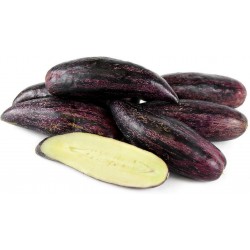Menu
-
MenuBack
- Home
-
Categories
-
-
Categories
-
Vegetable Seeds
-
Varieties by Country
- Varieties from Armenia
- Varieties from BiH
- Varieties from Croatia
- Varieties from France
- Varieties from Germany
- Varieties from Greece
- Varieties from Hungary
- Varieties from India
- Varieties from Italy
- Varieties from Japan
- Varieties from North Macedonia
- Varieties from Peru
- Varieties from Russia
- Varieties from Serbia
- Varieties from Slovenia
- Varieties from Spain
- Varieties from Thailand
- Varieties from Turkey
- Varieties from USA
- Tomato Seeds
- Corn Seeds
- Gourd family
- Bean family
- Cucumber Seeds
- Pepper Seeds
- Carrot family
- Onion family
- Lettuce Seeds
- Potato family
- Cabbage family
- Radish Seeds
- Beetroot family
- Watermelon Seeds
- Melon Seeds
- Cauliflower Seeds
- Sunflower family
-
Varieties by Country
- Fruit Seeds
- Chili - Habanero Seeds
- Medicinal Herb Seeds
- Climbing Plants Seeds
- Trees Bonsai Seeds
- Palm Seeds
- Ornamental Grasses Seeds
- Tobacco Seeds
-
Vegetable Seeds
-
-
-
-
- NEW PRODUCTS
- Create account
- Delivery - Payment
- FAQ
Last Product Reviews
Out of the two seeds, one germinated and the other one was dead and floatin...
By
 Riikka H on 07/03/2024
Riikka H on 07/03/2024
Verified Purchase
There are 389 products.
Showing 256-270 of 389 item(s)

Plant resistant to cold and frost
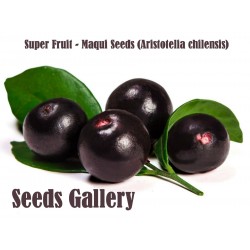
Maqui or Chilean Wineberry...
Price
€2.85
(SKU: V 237)
Seeds Gallery EU,
5/
5
<!DOCTYPE html>
<html>
<head>
<meta http-equiv="Content-Type" content="text/html; charset=UTF-8" />
</head>
<body>
<h2><strong>Maqui or Chilean Wineberry Seeds (Aristotelia chilensis)</strong></h2>
<h2><span style="color: #ff0000;"><strong>Price for Package of 5 seeds.</strong></span></h2>
<p><span>Maqui is an amazing anti-oxidant fruit from Chile. Its sweet fruit carries more antioxidants than blueberries and even açai.<span> </span>It grows in a wide range of climates and is very versatile for this.<span> </span>Commercial maqui production is just starting out as the amazing health benefits of this fruit are learned about around the world.</span></p>
<p><span>In ancient times, Indigenous peoples would make an alcoholic beverage from the sweet pulp. Today in Chile it is enjoyed by vacationers in the Patagonia region. It's an easy shrub to spot in high humidity areas or near streams.<span> </span></span></p>
<p><span><span> </span>Germination is from a couple of weeks to 3 months.<span> </span></span></p>
<p><strong><span>Instructions</span></strong><span>: Seeds can be soaked in water for 24 hours. Plant seeds in a moist medium.<span> </span>Sphagnum moss works well. Keep at warm temps for several weeks. Do not oversaturate the medium.<span> </span>We have lower shipping if you purchase multiple packets and more seeds at our acai site.<span> </span>Also, it can speed up germination to scratch the seed coat with sandpaper.</span></p>
<h2><span>WIKIPEDIA:</span></h2>
<p><span>Aristotelia chilensis, the maqui or Chilean wineberry, is a species of the Elaeocarpaceae family native to the Valdivian temperate rainforests of Chile and adjacent regions of southern Argentina. Maqui is sparsely cultivated.</span></p>
<p><span>Maqui is a small dioecious tree reaching 4–5 m in height and is evergreen. Its divided trunk has a smooth bark. The branches are abundant, thin and flexible. The leaves are simple, opposite, hanging, oval-lanceolate, with serrated edges, naked and coriaceous. The leaf venation is well visible and the leaf stalk is strong red. In the beginning of spring, the tree sheds the old cohort. The old cohort is used as a carbohydrate source to form the new leaves and flowers.</span></p>
<h2><strong><span>Flowers and berries</span></strong></h2>
<p><span>Maqui flowers at the end of spring. The white flowers are unisexual and small. They yield a small edible fruit. A tree at the age of seven years produces up to 10 kg berries per year. The small, purple-black berries are approximately 4–6 mm in diameter and contain 4-8 angled seeds. With a taste similar to blackberries, maqui is also known as the Chilean wineberry, and locally in Spanish as maqui or maque.</span></p>
<h2><strong><span>Wild maqui</span></strong></h2>
<p><span>The main area of wild maqui can be found in the Chilean forests. It includes the Coquimbo and Aysén regions and is 170,000 hectares in total area.[2] The average area yield is about 220 kg per hectare annually, with estimated yield of only 90 tons due to its remote access and difficulty for transportation.</span></p>
<h2><strong><span>Harvesting</span></strong></h2>
<p><span>The berries are collected from December to March each year by families, mainly Mapuche who collect their harvest near the Andes Mountains. The process involves collecting the side branches of trees, shaking them to separate the berries, and then employing a mechanical process to separate berries from leaves. The stored fruits are sold in local markets, with prices ranging from US $0.65-1.50 per 100 grams.</span></p>
<h2><strong><span>Seed distribution</span></strong></h2>
<p><span>Maqui berries are a favored food for birds at the end of summer. Deforestation of the Valdivian temperate rainforests in Chile suppresses seed dispersal by birds and leads to inbreeding depression.</span></p>
<h2><strong><span>Cultivation</span></strong></h2>
<p><span>Maqui is planted in home gardens and is not grown on an orchard scale. Most of the fruits on the market come from the wild. Maqui is frost sensitive and fairly tolerant of maritime exposure. It prefers a well-drained soil in full sun with a protection against cold drying winds. The soil should be slightly acidic with moderate fertility.</span></p>
<p><span>Maqui can be planted in USDA- zone 8 to 12. It is cultivated in Spain and in milder, moister areas of Britain where winter frosts reduce plant stock, stimulating growth of more shoots in spring.</span></p>
<h2><strong><span>Propagation</span></strong></h2>
<p><span>The seeds germinate without cold stratification. In zones with the possible appearance of frost, it is recommended to sow in spring in a greenhouse. The plants are planted in autumn into individual pots if they are grown enough. The pots are still in the greenhouse for the first winter.</span></p>
<p><span>After the last expected frost in spring, the plants can be planted out into their final positions. In their first winter outdoors, a frost protection is required.[6] For further propagation, a vegetal reproduction is possible: cuttings of wood with a length of 15 to 30 cm can be planted into pots. These cuttings normally root and can be planted out in the following spring.</span></p>
<h2><strong><span>Uses</span></strong></h2>
<p><span>Maqui berries are used for food and dietary supplements, mainly due to interest for color and anthocyanin content. The berries are raw, dried or processed into jam, juice, an astringent or as an ingredient in processed foods or beverages.</span></p>
<h2><strong><span>Anthocyanin research</span></strong></h2>
<p><span>Only limited polyphenol research has been completed on the maqui berry showing its anthocyanin content to include eight glucoside pigments of delphinidin and cyanidin, the principal anthocyanin being delphinidin 3-sambubioside-5-glucoside (34% of total anthocyanins).[8][9] The average total anthocyanin content was 138 mg per 100 g of fresh fruit (212 mg per 100 g of dry fruit),[9] ranking maqui low among darkly pigmented fruits for anthocyanin content (see Anthocyanins for tabulated content data). One study found that anthocyanins are also present in maqui leaves.</span></p>
<h2><strong><span>History</span></strong></h2>
<p><span>The edible fruit was eaten by the Mapuche Indians. Claude Gay documented in 1844 in his "Physical Atlas of History and Politics of Chile" that natives used maqui to prepare chicha which purportedly contributed unusual strength and stamina for warriors. By speculation, the Mapuche Indians used berry leaves, stems, fruit and wine medicinally over generations.</span></p>
<p><span> </span></p>
</body>
</html>
V 237

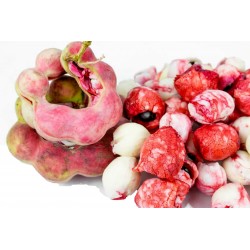
Monkeypod - Manila...
Price
€2.50
(SKU: V 238)
Seeds Gallery EU,
5/
5
<h2><strong>Monkeypod - Manila tamarind Seeds (Pithecellobium dulce)</strong></h2>
<h2><span style="color:#ff0000;"><strong>Price for Package of 5 seeds.</strong></span></h2>
<p><span>Depending on the region of its occurrence, Pithecellobium dulce is known by different names. In its native Mexico and Japan, the tree is known as huamuche, guamuche – huamúchil - guamúchil - cuamúchil - deriving from its Nahuatl name cuauhmochitl. In the wider region, it is also called "pinzán"', or 'guamá americano (Puerto Rico).</span></p>
<p><span>It is called "seema chintakaya" (</span><span>సీమ</span><span>చింతకాయ</span><span>) in Telugu. Monkeypod is an English name[3] but is also used for several other plants, including Albizia saman. Other names include blackbead, sweet Inga,[2] </span><span>ផ្លែអំពិលទឹក</span><span> (Plaeh umpel tek) (Khmer), Makham thet i.e. Foreign Tamarind (Thai: </span><span>มะขามเทศ</span><span>), ʻopiuma (Hawaiian), kamunsil (Hiligaynon), damortis or kamantiris (Ilokano), kamachile (Tagalog),[4] </span><span>கொர்கலிக்காய்</span><span>/ </span><span>கோணக்காய்</span><span>/ </span><span>கோன</span><span>புளியங்கா</span><span>/ </span><span>கொடுக்காப்புளி</span><span> / </span><span>கொடிக்காய்</span><span> kodukkappuli or kodikkai (Tamil), </span><span>ದೊರ</span><span>ಹುಣಸೆ</span><span>/</span><span>ಸೀಮೆ</span><span>ಹುಣಸೆ</span><span>/</span><span>ಇಲಾಚಿ</span><span>ಕಾಯಿ</span><span>/</span><span>ಇಲಾಚ್</span><span>-</span><span>ಹುಂಚಿ</span><span>ಕಾಯಿ</span><span> dora hunase or seeme hunase or ilaichi kai or ilach-hunchi kai (Kannada), </span><span>વિલાયતી</span><span>આંબલી</span><span> i.e. Foreign Tamarind - "</span><span>બખાઇ</span><span>આમ્બલી</span><span>" i.e. "Bakhai Ambli" or Goras ambli (Gujarati), </span><span>जलेबी</span><span> i.e. Jalebi like or </span><span>गंगा</span><span>इमली</span><span> i.e. Ganges Tamarind or </span><span>विलायती</span><span>इमली</span><span> i.e. Foreign Tamarind or "'Singri"' i.e. "</span><span>सिंगड़ी</span><span>" (Hindi), </span><span>জিলাপি</span><span> i.e. Jilapi meaning Jalebi (Bengali), seeme hunase (Kannada), </span><span>चिंच</span><span>बुलाई</span><span> or </span><span>विलायती</span><span>चिंच</span><span> i.e. Foreign Tamarind" or "</span><span>फिरंगी</span><span>चिंच</span><span> (Marathi) and "Achhi gidamiri" (Sindhi). In odisha, it is called Seema Kaiyan(Odia).</span></p>
<p><span>In India, it goes by the name "Madras thorn", although it is not native to Madras. The name "Manila tamarind" is also misleading, since it is neither closely related to tamarind nor native to Manila.</span></p>
<p><span>In Kuwait, it has the same name as in India but in Arabic "Showkat Madras". Showkat meaning "thorn" and that would mean Madras Thorn. It appears to have been introduced in Kuwait in the 60's or 70's and maybe introduced by Indians. One can still see the remains of the tree or living trees in the public parks established during the 60's up until the 1980s in Kuwait City. The tree is rarely sold in commercial nurseries but the old gardeners seem to know it.</span></p>
<p><span>Pithecellobium dulce is a species of flowering plant in the pea family, Fabaceae, that is native to the Pacific Coast and adjacent highlands of Mexico, Central America, and northern South America.[2] It is an Introduced species and extensively naturalized in the Caribbean, Florida, Guam, India, Bangladesh,Thailand and the Philippines. It is considered an invasive species in Hawaii.</span></p>
<p><strong><span>Description</span></strong></p>
<p><span>Pithecellobium dulce is a tree that reaches a height of about 10 to 15 m (33 to 49 ft). Its trunk is spiny and its leaves are bipinnate. Each pinna has a single pair of ovate-oblong leaflets that are about 2 to 4 cm (0.79 to 1.57 in) long. The flowers are greenish-white, fragrant, sessile and reach about 12 cm (4.7 in) in length, though appear shorter due to coiling. The flowers produce a pod, which turns pink when ripe and opens to expose an edible pulp. The pulp contains black shiny seeds that are circular and flat.</span></p>
<p>The seed is dispersed via birds that feed on the sweet pulp. The tree is drought resistant and can survive in dry lands from sea level to an elevation of 1,500 m (4,900 ft), making it suitable for cultivation as a street tree.</p>
<h2><span>Uses</span></h2>
<h2><span>As food</span></h2>
<p><span>The seed pods contain a sweet and sour pulp that which in Mexico is eaten raw as an accompaniment to various meat dishes and used as a base for drinks with sugar and water ('agua de guamúchil'). The seeds are also edible and refined to extract oil, which amounts to 10% of their weight. They also contain 28% protein.</span></p>
<h2><span>As medicine</span></h2>
<p><span>The bark and pulp are astringent and hemostatic. The indigenous peoples of Mesoamerica use the pulp and bark against gum ailments, toothache, and hemorrhages in general. A bark extract is also used against dysentery, chronic diarrhea, and tuberculosis. An extract of the leaves is used for gall ailments and to prevent miscarriage. The ground seed is used to clean ulcers.</span></p>
<p><span> </span></p>
V 238 (5 S)


Plant resistant to cold and frost
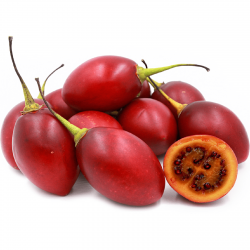
Tamarillo Seeds...
Price
€2.30
(SKU: V 113)
Seeds Gallery EU,
5/
5
<h2><strong><span style="color: #000000;">Tamarillo Seeds (Cyphomandra Betacea)</span></strong></h2>
<h2><strong><span style="color: #ff0000;">Price for Package of 5 or 10 seeds.</span></strong></h2>
<p>Cyphomandra betacea, also known as the tree tomato, or tamarillo, is a small evergreen and fast-growing tree, that originates from several regions of South America, including Peru and Chile. This small tree has large heart-shaped leaves, fragrant flowers that are borne into clusters, red edible fruits.</p>
<p>The tomato tree is frost-hardy to 26°F to 28°F (-2°C to -3°C), and will best be grown in summer.</p>
<p>Newly planted tamarillos should be pruned to a height of 3 to 4 ft. to encourage branching. Yearly pruning thereafter is advisable to eliminate branches that have already fruited and to induce ample new shoots close to the main branches, since fruit is produced on new growth. Pruning also aids in harvesting, and if timed properly can extend the total fruiting period.</p>
<p>Hardiness Zone US 8-11 Aus 2-5 </p>
<div>
<h2><strong>WIKIPEDIA:</strong></h2>
<div><span>The </span><b>tamarillo</b><span> is a small tree or </span>shrub<span> in the </span>flowering plant<span> family </span>Solanaceae<span> (the nightshade family). It is best known as the species that bears the </span><b>tamarillo</b><span>, an egg-shaped edible </span>fruit<span>.</span><sup id="cite_ref-tamarillocom_2-0" class="reference">[2]</sup><span> It is also known as the </span><b>tree tomato</b><span>,</span><sup id="cite_ref-3" class="reference">[3]</sup><span> </span><b>tomate andino</b><span>, </span><b>tomate serrano</b><span>, </span><b>tomate de yuca</b><span>, </span><b>sachatomate</b><span>, </span><b>berenjena</b><span>, </span><b>tamamoro</b><span>, and </span><b>tomate de árbol</b><span> in South America.</span></div>
<div></div>
<div>
<h3><span class="mw-headline" id="Plant_origin_and_regions_of_cultivation">Plant origin and regions of cultivation</span></h3>
<p>The tamarillo is native to the Andes of Ecuador, Colombia, Peru, Chile, and Bolivia. Today it is still cultivated in gardens and small orchards for local production,<sup id="cite_ref-SmallFruitsReview_4-0" class="reference">[4]</sup> and it is one of the most popular fruits in these regions.<sup id="cite_ref-economicBotany_5-0" class="reference">[5]</sup> Other regions of cultivation are the subtropical areas throughout the world, such as Rwanda, South Africa, Darjeeling and Sikkim in India, Nepal, Hong Kong, China, the United States, Australia, Bhutan and New Zealand.<sup id="cite_ref-SmallFruitsReview_4-1" class="reference">[4]</sup></p>
<p>The first internationally marketed crop of tamarillos in Australia was produced around 1996, although permaculture and exotic fruit enthusiasts had increasingly grown the fruit around the country from the mid-1970s on.</p>
<p>In New Zealand, about 2,000 tons are produced on 200 hectares of land and exported to the United States, Japan<sup id="cite_ref-LostCrops_6-0" class="reference">[6]</sup> and Europe. For the export, the existing marketing channels developed for the kiwifruit are used.<sup id="cite_ref-SmallFruitsReview_4-2" class="reference">[4]</sup></p>
<p>The tamarillo is also successfully grown at higher elevations of Malaysia and the Philippines, and in Puerto Rico.<sup id="cite_ref-economicBotany_5-1" class="reference">[5]</sup> In the hot tropical lowlands, it develops only small fruits and fruit setting is seldom.</p>
<p>Prior to 1967, the tamarillo was known as the "tree tomato" in New Zealand, but a new name was chosen by the New Zealand Tree Tomato Promotions Council in order to distinguish it from the ordinary garden tomatoand increase its exotic appeal.</p>
</div>
<span style="color: #ff0000;"><span style="color: #ff0000;"><strong></strong></span></span>
<h3><span class="mw-headline" id="Plant">Plant</span></h3>
<span style="color: #ff0000;"><span style="color: #ff0000;"><strong></strong></span></span>
<div class="thumb tright">
<div class="thumbinner"><img alt="" src="https://upload.wikimedia.org/wikipedia/commons/thumb/3/31/Cyphomandra_betacea1.jpg/220px-Cyphomandra_betacea1.jpg" width="220" height="165" class="thumbimage">
<div class="thumbcaption">
<div class="magnify"></div>
Flower cluster</div>
</div>
</div>
<span style="color: #ff0000;"><span style="color: #ff0000;"><strong></strong></span></span>
<p>The plant is a fast-growing tree that grows up to 5 meters. Peak production is reached after 4 years,<sup id="cite_ref-LostCrops_6-1" class="reference">[6]</sup> and the life expectancy is about 12 years.<sup id="cite_ref-SmallFruitsReview_4-3" class="reference">[4]</sup> The tree usually forms a single upright trunk with lateral branches. The flowers and fruits hang from the lateral branches. The leaves are large, simple and perennial, and have a strong pungent smell.<sup id="cite_ref-LostCrops_6-2" class="reference">[6]</sup> The flowers are pink-white, and form clusters of 10 to 50 flowers. They produce 1 to 6 fruits per cluster. Plants can set fruit without cross-pollination, but the flowers are fragrant and attract insects. Cross-pollination seems to improve fruit set.<sup id="cite_ref-LostCrops_6-3" class="reference">[6]</sup> The roots are shallow and not very pronounced, therefore the plant is not tolerant of drought stress and can be damaged by strong winds. Tamarillos will hybridize with many other solanaceae, though the hybrid fruits will be sterile, and unpalatable in some instances.</p>
<span style="color: #ff0000;"><span style="color: #ff0000;"><strong></strong></span></span>
<h3><span class="mw-headline" id="Fruit">Fruit</span></h3>
<span style="color: #ff0000;"><span style="color: #ff0000;"><strong></strong></span></span>
<div class="thumb tright">
<div class="thumbinner"><img alt="" src="https://upload.wikimedia.org/wikipedia/commons/thumb/9/9a/Solanum_betaceum_unripe_fruits.jpg/220px-Solanum_betaceum_unripe_fruits.jpg" width="220" height="146" class="thumbimage">
<div class="thumbcaption">
<div class="magnify"></div>
Unripe fruits</div>
</div>
</div>
<span style="color: #ff0000;"><span style="color: #ff0000;"><strong></strong></span></span>
<div class="thumb tright">
<div class="thumbinner"><img alt="" src="https://upload.wikimedia.org/wikipedia/commons/thumb/0/00/Tamarillos%28janek2005%29.jpg/220px-Tamarillos%28janek2005%29.jpg" width="220" height="182" class="thumbimage">
<div class="thumbcaption">
<div class="magnify"></div>
Ripe fruits</div>
</div>
</div>
<span style="color: #ff0000;"><span style="color: #ff0000;"><strong></strong></span></span>
<p>The fruits are egg-shaped and about 4-10 centimeters long. Their color varies from yellow and orange to red and almost purple. Sometimes they have dark, longitudinal stripes. Red fruits are more acetous, yellow and orange fruits are sweeter. The flesh has a firm texture and contains more and larger seeds than a common tomato.<sup id="cite_ref-SmallFruitsReview_4-4" class="reference">[4]</sup> The fruits are very high in vitamins and iron and low in calories (only about 40 calories per fruit).</p>
<span style="color: #ff0000;"><span style="color: #ff0000;"><strong></strong></span></span>
<h3><span class="mw-headline" id="Soil_and_climate_requirements">Soil and climate requirements</span></h3>
<span style="color: #ff0000;"><span style="color: #ff0000;"><strong></strong></span></span>
<p>The tamarillo prefers subtropical climate, with rainfall between 600 and 4000 millimeters and annual temperatures between 15 and 20 °C.<sup id="cite_ref-SmallFruitsReview_4-6" class="reference">[4]</sup> It is intolerant to frost (below -2 °C) and drought stress. It is assumed that fruit set is affected by night temperatures. Areas where citrus are cultivated provide good conditions for tamarillos as well, such as in the Mediterranean climate. Tamarillo plants grow best in light, deep, fertile soils, although they are not very demanding. However, soils must be permeable since the plants are not tolerant to water-logging.<sup id="cite_ref-SmallFruitsReview_4-7" class="reference">[4]</sup> They grow naturally on soils with a pH of 5 to 8.5.</p>
<span style="color: #ff0000;"><span style="color: #ff0000;"><strong></strong></span></span>
<h3><span class="mw-headline" id="Growth">Growth</span></h3>
<span style="color: #ff0000;"><span style="color: #ff0000;"><strong></strong></span></span>
<p>Propagation is possible by both using seeds or cuttings.<sup id="cite_ref-SmallFruitsReview_4-8" class="reference">[4]</sup><sup id="cite_ref-7" class="reference">[7]</sup> Seedlings first develop a straight, about 1.5 to 1.8 meters tall trunk, before they branch out. Propagation by seeds is easy and ideal in protected environments. However, in orchards with different cultivars, cross-pollination will occur and characteristics of the cultivars get mixed up. Seedlings should be kept in the nursery until they reach a height of 1 to 1.5 meters, as they are very frost-sensitive.</p>
<span style="color: #ff0000;"><span style="color: #ff0000;"><strong></strong></span></span>
<p>Plants grown from cuttings branch out earlier and result in more shrub-like plants that are more suitable for exposed sites. Cuttings should be made from basal and aerial shoots, and should be free of pathogenic viruses. Plants grown from cuttings should be kept in the nursery until they reach a height of 0.5 to 1 meter.</p>
<span style="color: #ff0000;"><span style="color: #ff0000;"><strong></strong></span></span>
<p>The tree grows very quickly and is able to bear fruit after 1.5 to 2 years.<sup id="cite_ref-economicBotany_5-2" class="reference">[5]</sup> The plant is daylength-insensitive. The fruits do not mature simultaneously, unless the tree has been pruned. A single tree can produce more than 20 kg of fruit per year; an orchard yields in 15 to 17 tons per hectare.<sup id="cite_ref-LostCrops_6-5" class="reference">[6]</sup> One single mature tree in good soil will bear more fruit than a typical family can eat in about 3 months.</p>
<span style="color: #ff0000;"><span style="color: #ff0000;"><strong></strong></span></span>
<p>Tamarillos are suitable for growing as indoor container plants, though their swift growth, their light, water and humidity requirements and their large leaves can pose a challenge to those with limited space.</p>
<span style="color: #ff0000;"><span style="color: #ff0000;"><strong></strong></span></span>
<h3><span class="mw-headline" id="Plant_management">Plant management</span></h3>
<span style="color: #ff0000;"><span style="color: #ff0000;"><strong></strong></span></span>
<div class="thumb tright">
<div class="thumbinner"><img alt="" src="https://upload.wikimedia.org/wikipedia/commons/thumb/0/0a/Cyphomandra_betacea2.jpg/220px-Cyphomandra_betacea2.jpg" width="220" height="293" class="thumbimage">
<div class="thumbcaption">
<div class="magnify"></div>
Tamarillo tree</div>
</div>
</div>
<span style="color: #ff0000;"><span style="color: #ff0000;"><strong></strong></span></span>
<p>The tamarillo trees are adaptable and very easy to grow. However, some plant management strategies can help to stabilize and improve plant performance.</p>
<span style="color: #ff0000;"><span style="color: #ff0000;"><strong></strong></span></span>
<h4><span class="mw-headline" id="Planting">Planting</span></h4>
<span style="color: #ff0000;"><span style="color: #ff0000;"><strong></strong></span></span>
<p>Planting distances depend on the growing system. In New Zealand, with mechanized production, single row planting distances of 1 to 1.5 meters between plants and 4.5 to 5 meters between rows are recommended. In traditional growing regions such as the Andean region, plantations are much more dense, with 1.2 to 1.5 meters between plants. Dense planting can be a strategy to protect plants against wind.<sup id="cite_ref-SmallFruitsReview_4-9" class="reference">[4]</sup> On poorly drained soils, plants should be planted on ridges.</p>
<span style="color: #ff0000;"><span style="color: #ff0000;"><strong></strong></span></span>
<h4><span class="mw-headline" id="Pruning">Pruning</span></h4>
<span style="color: #ff0000;"><span style="color: #ff0000;"><strong></strong></span></span>
<p>Pruning can help to control fruit size, plant size, harvest date and to simplify the harvesting of fruits.<sup id="cite_ref-SmallFruitsReview_4-10" class="reference">[4]</sup> Cutting the tip of young plants leads to the desired branch height. Once the tree shape has been formed, pruning is reduced to the removal of old or dead wood and previously fruited branches, since branches that have already carried fruits will produce smaller fruits with lower quality the next time. Light pruning leads to medium-sized, heavy pruning to large sized fruits. Basal shoots should be removed. When plants are grown in greenhouses, pruning prevents excessive vegetative growth.</p>
<span style="color: #ff0000;"><span style="color: #ff0000;"><strong></strong></span></span>
<p>When the tree is about 1 to 1.5 metres in height, it is advisable to cut the roots on one side and lean the tree to the other (in the direction of the midday sun at about 30 to 45 degrees). This allows fruiting branches to grow all along the trunk rather than just at the top.</p>
<span style="color: #ff0000;"><span style="color: #ff0000;"><strong></strong></span></span>
<div class="thumb tright">
<div class="thumbinner"><img alt="" src="https://upload.wikimedia.org/wikipedia/commons/thumb/e/e3/Tamarillo_seedlings%2C_6_months_old.jpg/220px-Tamarillo_seedlings%2C_6_months_old.jpg" width="220" height="215" class="thumbimage">
<div class="thumbcaption">
<div class="magnify"></div>
Tamarillo seedlings, 6 months old</div>
</div>
</div>
<span style="color: #ff0000;"><span style="color: #ff0000;"><strong></strong></span></span>
<h4><span class="mw-headline" id="Mulching">Mulching</span></h4>
<span style="color: #ff0000;"><span style="color: #ff0000;"><strong></strong></span></span>
<p>Since the plants are sensitive to drought stress, mulching can help to preserve moisture in the soil.<sup id="cite_ref-LostCrops_6-6" class="reference">[6]</sup> It can also be a strategy to suppress weeds, as other soil management techniques, such as plowing, are not possible due to the shallow and sensitive root system.</p>
<span style="color: #ff0000;"><span style="color: #ff0000;"><strong></strong></span></span>
<h4><span class="mw-headline" id="Shelter">Shelter</span></h4>
<span style="color: #ff0000;"><span style="color: #ff0000;"><strong></strong></span></span>
<p>The plants have to be protected from wind. Their shallow root system does not provide enough stability, and the lateral branches are fragile and break easily when carrying fruits.<sup id="cite_ref-SmallFruitsReview_4-11" class="reference">[4]</sup></p>
<span style="color: #ff0000;"><span style="color: #ff0000;"><strong></strong></span></span>
<h4><span class="mw-headline" id="Irrigation_and_fertilization">Irrigation and fertilization</span></h4>
<span style="color: #ff0000;"><span style="color: #ff0000;"><strong></strong></span></span>
<p>To maximize and stabilize production, water and nutrient inputs should be provided when needed. The plants need continuous supply of water due to their shallow root system. Drought stress results in a decrease of plant growth, fruit size and productivity.<sup id="cite_ref-SmallFruitsReview_4-12" class="reference">[4]</sup> Recommended fertilizer rates per hectare are 170 kg of Nitrogen, 45 kg of Phosphorus and 130 to 190 kg of Potassium for intensive New Zealand production systems. Phosphorus and Potassium are applied in the beginning of the season, Nitrogen applications are distributed throughout the year.<sup id="cite_ref-SmallFruitsReview_4-13" class="reference">[4]</sup></p>
<span style="color: #ff0000;"><span style="color: #ff0000;"><strong></strong></span></span>
<h4><span class="mw-headline" id="Pest_management">Pest management</span></h4>
<span style="color: #ff0000;"><span style="color: #ff0000;"><strong></strong></span></span>
<p>The tamarillo tree is, compared to similar crops such as tomatoes, quite resistant to pests in general. Still, to reduce risk in intensive production systems, some pests have to be controlled to avoid major crop damage. To control pests, the same control methods as for other solanaceae can be used.</p>
<span style="color: #ff0000;"><span style="color: #ff0000;"><strong></strong></span></span>
<h3><span class="mw-headline" id="Harvest">Harvest</span></h3>
<span style="color: #ff0000;"><span style="color: #ff0000;"><strong></strong></span></span>
<p>Ripening of fruits is not simultaneous. Several harvests are necessary.<sup id="cite_ref-8" class="reference">[8]</sup> In climates with little annual variation, tamarillo trees can flower and set fruit throughout the year. In climates with pronounced seasons (such as New Zealand), fruits ripen in autumn. Premature harvest and ethylene induced ripening in controlled-atmosphere chambers is possible with minimal loss of fruit quality.<sup id="cite_ref-Ripening_9-0" class="reference">[9]</sup> The fragile lateral branches can break easily when loaded with fruits, so premature harvest helps to reduce this risk and allows storage of fruits up to 20 days at room temperature. A cold-water dipping process, developed by the New Zealand Department of Scientific and Industrial Research also allows further storage of 6–10 weeks.<sup id="cite_ref-SmallFruitsReview_4-14" class="reference">[4]</sup></p>
<span style="color: #ff0000;"><span style="color: #ff0000;"><strong></strong></span></span>
<h2><span class="mw-headline" id="Usage">Usage</span></h2>
<span style="color: #ff0000;"><span style="color: #ff0000;"><strong></strong></span></span>
<h3><span class="mw-headline" id="Culinary_use">Culinary use</span></h3>
<span style="color: #ff0000;"><span style="color: #ff0000;"><strong></strong></span></span>
<p>The fruit is eaten by scooping the flesh from a halved fruit. When lightly sugared and cooled, the flesh is used for a breakfast dish. Some people in New Zealand cut the fruit in half, scoop out the pulpy flesh and spread it on toast at breakfast. Yellow-fruited cultivars have a sweeter flavor, occasionally compared to mango or apricot. The red-fruited variety, which is much more widely cultivated, is more tart, and the savory aftertaste is far more pronounced. In the Northern Hemisphere, tamarillos are most frequently available from July until November, and fruits early in the season tend to be sweeter and less astringent.</p>
<span style="color: #ff0000;"><span style="color: #ff0000;"><strong></strong></span></span>
<p>They can be made into compotes, or added to stews (e.g. Boeuf Bourguignon), hollandaise, chutneys and curries. Desserts using this fruit include bavarois and, combined with apples, a strudel.</p>
<span style="color: #ff0000;"><span style="color: #ff0000;"><strong></strong></span></span>
<p>Tamarillos can be added as a secondary fermentation flavouring to Kombucha Tea for a tart and tangy taste. The fruit should be mashed and added at a ratio of 3 Tamarillos to 1 Litre of Kombucha, however great care should be taken to not allow too much carbon dioxide gas to build up in sealed bottles during secondary fermentation. The sugar content of fresh Tamarillos added to Kombucha can generate a rapid carbon dioxide production in secondary fermentation within just 48–72 hours.</p>
<span style="color: #ff0000;"><span style="color: #ff0000;"><strong></strong></span></span>
<p>In Colombia, Ecuador, Panama and parts of Indonesia (including Sumatra and Sulawesi), fresh tamarillos are frequently blended together with water and sugar to make a juice. It is also available as a commercially pasteurized purée.</p>
<span style="color: #ff0000;"><span style="color: #ff0000;"><strong></strong></span></span>
<p>In Nepal, a version of the South American fruit is decently popular. It is typically consumed as a chutney or a pickle during the autumn and winter months. It is known as <i>Tammatar</i> and <i>Ram Bheda</i>. Similar to Nepal, the Indian regions of Ooty, Darjeeling and Sikkim also consume Tamarillo.</p>
<span style="color: #ff0000;"><span style="color: #ff0000;"><strong></strong></span></span>
<p>In Ecuador, the tamarillo, known as <i>tomate de árbol</i>, is blended with chili peppers to make a hot sauce commonly consumed with local dishes of the Andean region. The sauce is simply referred to as <i>aji</i> and is present at every meal in Ecuador.</p>
<span style="color: #ff0000;"><span style="color: #ff0000;"><strong></strong></span></span>
<p>The flesh of the tamarillo is tangy and variably sweet, with a bold and complex flavor, and may be compared to kiwifruit, tomato, guava, or passion fruit. The skin and the flesh near it have a bitter taste and are not usually eaten raw</p>
<span style="color: #ff0000;"><span style="color: #ff0000;"><strong></strong></span></span>
<p>The tamarillo has been described as having a taste similar to that of a passion fruit and a piquant tomato combined.<sup class="noprint Inline-Template Template-Fact">[<i><span title="This claim needs references to reliable sources. (January 2009)">citation needed</span></i>]</sup></p>
<span style="color: #ff0000;"><span style="color: #ff0000;"><strong></strong></span></span>
<p>The red and purple types of fruits are preferred in import countries of Europe: Even though they taste more acidic, their color is favoured by consumers.<sup id="cite_ref-SmallFruitsReview_4-15" class="reference">[4]</sup></p>
<span style="color: #ff0000;"><span style="color: #ff0000;"><strong></strong></span></span>
<h3><span class="mw-headline" id="Industrial_use">Industrial use</span></h3>
<span style="color: #ff0000;"><span style="color: #ff0000;"><strong></strong></span></span>
<p>The fruits are high in pectin and therefore have good properties for preserves. However, they oxidize and lose color when not treated. Yellow fruit types are better suited to industrial use.</p>
<span style="color: #ff0000;"><span style="color: #ff0000;"><strong></strong></span></span>
<h2><span class="mw-headline" id="Prospects">Prospects</span></h2>
<span style="color: #ff0000;"><span style="color: #ff0000;"><strong></strong></span></span>
<p>Research and breeding should improve plantation management, fruit quality and postharvest treatment.<sup id="cite_ref-LostCrops_6-7" class="reference">[6]</sup> A better understanding of plant physiology, nutritional requirements of plants and fruit set mechanisms will help to improve growing systems. Breeding goals are to break seed dormancy, to improve sweetness of fruits and to increase yield. For industrial uses, little "stones" of sodium and calcium that occasionally appear in the fruit skin form a problem. Those stones have to be eliminated by breeding.</p>
<span style="color: #ff0000;"><strong><br></strong></span></div>
<div></div><script src="//cdn.public.n1ed.com/G3OMDFLT/widgets.js"></script>
V 113 (10 S)

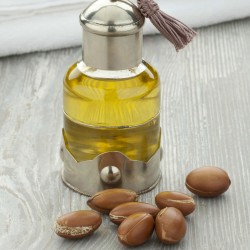
Argan seeds (Argania spinosa)
Price
€3.95
(SKU: T 75)
Seeds Gallery EU,
5/
5
<!DOCTYPE html>
<html>
<head>
<meta http-equiv="Content-Type" content="text/html; charset=UTF-8" />
</head>
<body>
<h2><span style="font-size: 14pt;"><strong>Argan seeds (Argania Spinosa)</strong></span></h2>
<h2><span style="color: #d0121a; font-size: 14pt;"><strong>Price for Package of 3 seeds.</strong></span></h2>
<p><span>Argania (Berber: </span><span>ⴰⵔⴳⴰⵏ</span><span> Argan) is a genus of flowering plants containing the sole species Argania Spinosa, known as argan, a tree endemic to the calcareous semidesert Sous valley of southwestern Morocco. Argan trees grow to 8–10 m (26–33 ft) high and live up to approximately 200 years. They are thorny, with gnarled trunks and wide spreading crown. The crown has a circumference of about 70 m (230 ft) and the branches lean towards the ground.</span></p>
<p><span>The leaves are small, 2–4 cm (0.79–1.57 in) long, and oval with a rounded apex. The flowers are small, with five pale yellow-green petals; flowering is in April. The fruit is 2–4 cm (0.79–1.57 in) long and 1.5–3 cm (0.59–1.18 in) broad, with a thick, bitter peel surrounding a sweet-smelling but unpleasantly flavored layer of the pulpy pericarp. This surrounds the very hard nut, which contains one (occasionally two or three) small, oil-rich seeds. The fruit takes over a year to mature, ripening in June to July of the following year.</span></p>
<h2><span>Name</span></h2>
<p><span>The scientific name <em>argania</em> is derived from <em>argan</em>, the name of the tree in </span><span>Tasussit</span><span>, the </span><span>Berber</span><a href="https://en.wikipedia.org/wiki/Berber_languages"><span> </span></a><span>language</span><span> which is spoken by the majority of the people living in the areas where the tree is endemic. Tasussit has a rich vocabulary for the various parts of the fruit, its stages of ripeness, and its harvesting and processing. The oil is also called <em>argan</em>. In medieval Arabic pharmacological sources, the tree is known as <em>harjān</em>, a name which is also derived from Tasussit <em>argan</em>.</span></p>
<h2><span>Cultivation</span></h2>
<p><span>Goats climbing an Argan tree </span></p>
<p><span>In Morocco, <em>arganeraie</em> forests now cover some 8,280 km</span><sup><span>2</span></sup><span> (3,200 sq mi) and are designated as a </span><span>UNESCO</span><span> </span><span>biosphere</span><a href="https://en.wikipedia.org/wiki/Biosphere_reserve"><span> </span></a><span>reserve</span><span>. Their area has shrunk by about half during the last 100 years, due to charcoal-making, grazing, and increasingly intensive cultivation. The best hope for the conservation of the trees may lie in the recent development of a thriving export market for </span><span>argan</span><span> oil</span><span> as a high-value product. However, the wealth brought by argan oil export has also created threats to argan trees in the form of increased goat population. Locals use the newfound wealth to buy more goats and the goats stunt the growth of the argan trees by climbing up and eating their leaves and fruit.</span></p>
<p><span>Argan is grown in </span><span>Israel</span><span>, in the </span><span>Arabah</span><span>, and </span><span>Negev.</span></p>
<h2><span>Uses</span></h2>
<p><span>In some parts of Morocco, argan takes the place of the </span><span>olive</span><span> as a source of </span><span>forage</span><span>, oil, </span><span>timber</span><span>, and fuel in Berber society. Especially near </span><span>Essaouira</span><span>, the argan tree is frequently climbed by goats.</span></p>
<h2>Fruit</h2>
<p><span>Argan fruit falls in July, when black and dry. Until this happens, goats are kept out of the argan woodlands by wardens. Rights to collect the fruit are controlled by law and village traditions. The leftover nuts are gathered after consumption and spit out by ruminating goats. Seeds spat out by the goats constitute an overlooked mechanism of </span><span>seed</span><span> dispersal</span><span>.</span></p>
<h2>Argan oil</h2>
<p><span>Argan oil is produced by several women's co-operatives in the southwestern parts of Morocco. The most labor-intensive part of oil-extraction is removal of the soft pulp (used to feed animals) and the cracking by hand, between two stones, of the hard nut. The seeds are then removed and gently roasted. This roasting accounts for part of the oil's distinctive, nutty flavor.</span></p>
<p><span>The traditional technique for oil extraction is to grind the roasted seeds to paste, with a little water, in a stone rotary quern. The paste is then squeezed by hand to extract the oil. The extracted paste is still oil-rich and is used as animal feed. Oil produced this way can be stored and used for 3–6 months, and will be produced as needed in a family, from a store of the kernels, which will keep for 20 years unopened. Dry-pressing is becoming increasingly important for oil produced for sale, as this method allows for faster extraction, and the oil produced can be used for 12–18 months after extraction.</span></p>
<p><span>The oil contains 80% unsaturated fatty acids, is rich in essential </span><span>fatty</span><span> acids</span><span>, and is more resistant to </span><span>oxidation</span><span> than olive oil. Argan oil is used for dipping bread, on </span><span>couscous</span><span>, </span><span>salads</span><span>, and similar uses. A dip for bread known as <em>amlou</em> is made from rgan oil, </span><span>almonds</span><span>, and </span><span>peanuts</span><span>, sometimes sweetened by </span><span>honey</span><span> or sugar. The unroasted oil is traditionally used as a treatment for skin diseases, and has become favoured by European cosmetics manufacturers.</span></p>
<p><span>Foliage, flowers and immature fruit </span></p>
<p><span><i><span>Argania Spinosa </span></i><span> <br /></span></span></p>
<p><span>Argan oil is sold in Morocco as a luxury item. The product is of increasing interest to cosmetics companies in Europe. It used to be difficult to buy the oil outside Morocco, but since 2001–2002, it has become a fashionable product in Europe and North America.</span><span> It is now widely available in specialist shops and occasionally in supermarkets. Its price (US$40–50 for 500 ml) is notable compared to other oils.</span></p>
<p><span>Argan oil contains:</span><sup><span></span></sup></p>
<ul>
<li><span><span> </span></span><span>44% </span><span>Oleic acid</span></li>
<li><span><span> </span></span><span>30% </span><span>Alpha-linolenic acid</span></li>
<li><span><span> </span></span><span>12% </span><span>Palmitic acid</span></li>
<li><span><span> </span></span><span>6% </span><span>Stearidonic acid</span></li>
<li><span><span> </span></span><span>5% </span><span>Linoleic acid</span><span>(<em>Conflicts with the table in </em></span><em><span>argan oil</span></em><span>)</span></li>
<li><span><span> </span></span><span>3% </span><span>Myristic acid</span></li>
</ul>
<h2>Animal feed</h2>
<p><span>Argan trees are a major source of forage for sheep, goats, camels, and cattle. Fruits and leaves are readily consumed by livestock. The press cake resulting from oil extraction can also be sun-dried and fed to ruminants. Bees can nest in argan trees, making them sites for wild honey harvesting.</span></p>
</body>
</html>
T 75

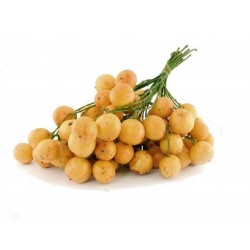
Burmese Grape Seeds...
Price
€4.95
(SKU: V 26)
Seeds Gallery EU,
5/
5
<h2><strong>Burmese Grape Seeds (Baccaurea ramiflora)</strong></h2>
<h2 class=""><span style="color: #ff0000;"><strong>Price for Package of 2 seeds.</strong></span></h2>
<p><strong><em><span>Baccaurea ramiflora</span></em></strong><span>,</span><sup><span><span>[1]</span></span></sup><span> the <strong>Burmese grape</strong>,</span><sup><span><span>[2]</span></span></sup><span> is a slow growing <span>evergreen</span> tree in the <span>Phyllanthaceae</span> family, growing to 25 m, with a spreading crown and thin bark. It is found throughout <span>Asia</span>, most commonly cultivated in <span>India</span>, <span>Bangladesh</span>, and <span>Malaysia</span>. It grows in evergreen forests on a wide range of soils. The fruit is harvested and used locally, eaten as a fruit, stewed or made into wine; it is also used medicinally to treat skin diseases. The bark, roots, and wood are harvested for medicinal uses.</span></p>
<p><span>The fruit is oval, colored yellowish, pinkish to bright red or purple, 2.5–3.5 cm in diameter, glabrous, with 2–4 large purple-red seed, with white aril.</span></p>
<p><strong><span>Ripe fruits of Burmese grapes</span></strong></p>
<p><span>Bark, roots and wood are dried and ground before boiling in water. Fruits can be kept fresh for 4–5 days, or boiled and mixed with salt after which it keeps well-closed jars. Marginal importance of the fruit locally used and sold.</span></p>
<p>The tree is valued locally for its edible fruit and is often cultivated in the home garden and intercropped with other tropical fruits like durian, rambutan, and mango. It is also planted as an ornamental and to provide shade.</p>
<p> </p><script src="//cdn.public.n1ed.com/G3OMDFLT/widgets.js"></script>
V 26 (2 S)


Coming Soon
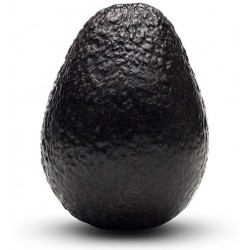
Black Avocado Seeds (Persea...
Price
€7.95
(SKU: V 0)
Seeds Gallery EU,
5/
5
<h2><span style="font-size: 14pt;"><strong>Black Avocado Seeds (Persea americana)</strong></span></h2>
<h2><span style="color: #d0121a; font-size: 14pt;"><strong>Price for package of 1 Seed.</strong></span></h2>
<p>The <b>avocado</b> (<i>Persea americana</i>) is a tree, long thought to have originated in South Central Mexico,<span style="font-size: xx-small;"> </span>classified as a member of the flowering plant family Lauraceae. The fruit of the plant, also called an avocado (or <b>avocado pear</b> or <b>alligator pear</b>), is botanically a large berry containing a single large seed.</p>
<p>Avocados are commercially valuable and are cultivated in tropical and Mediterranean climates throughout the world.<sup id="cite_ref-morton_4-1" class="reference">[4]</sup> They have a green-skinned, fleshy body that may be pear-shaped, egg-shaped, or spherical. Commercially, they ripen after harvesting. Avocado trees are partially self-pollinating and are often propagated through grafting to maintain a predictable quality and quantity of the fruit.</p>
<h2><span class="mw-headline" id="Botany">Botany</span></h2>
<div class="thumb tleft">
<div class="thumbinner"><img alt="Black Avocado Seeds (Persea americana)" src="https://upload.wikimedia.org/wikipedia/commons/thumb/2/2e/Avocado_Seedling.jpg/170px-Avocado_Seedling.jpg" class="thumbimage" width="170" height="267">
<div class="thumbcaption">
<div class="magnify"></div>
<i>Persea americana</i>, young avocado plant (seedling), complete with parted pit and roots</div>
</div>
</div>
<p><i>Persea americana</i> is a tree that grows to 20 m (66 ft), with alternately arranged leaves 12–25 cm (4.7–9.8 in) long. Panicles of flowers with deciduous bracts arise from new growth or the axils of leaves.<sup id="cite_ref-Nandwani2014_6-0" class="reference">[6]</sup> The flowers are inconspicuous, greenish-yellow, 5–10 mm (0.2–0.4 in) wide.</p>
<p>The species is variable because of selection pressure by humans to produce larger flesher fruits with a thinner exocarp.<sup id="cite_ref-Kole2011_7-0" class="reference">[7]</sup> The avocado fruit is a climacteric,<sup id="cite_ref-Yahia2011_8-0" class="reference">[8]</sup> single-seeded berry, due to the imperceptible endocarp covering the seed,<sup id="cite_ref-storey_5-1" class="reference">[5]</sup><sup id="cite_ref-whiley_9-0" class="reference">[9]</sup> rather than a drupe.<sup id="cite_ref-Essig2015_10-0" class="reference">[10]</sup> The pear-shaped fruit is 7–20 cm (2.8–7.9 in) long, weighs between 100 and 1,000 g (3.5 and 35.3 oz), and has a large central seed, 5–6.4 cm (2.0–2.5 in) long.<sup id="cite_ref-morton_4-2" class="reference">[4]</sup></p>
<h2><span class="mw-headline" id="History">History</span></h2>
<div class="thumb tleft">
<div class="thumbinner"><img alt="Black Avocado Seeds (Persea americana)" src="https://upload.wikimedia.org/wikipedia/commons/thumb/b/b7/Criollo_avocados_de_Oaxaca.png/220px-Criollo_avocados_de_Oaxaca.png" class="thumbimage" width="220" height="146">
<div class="thumbcaption">
<div class="magnify"></div>
Native Oaxaca <i>criollo</i> avocados, the ancestral form of today's domesticated varieties</div>
</div>
</div>
<p><i>Persea americana</i>, or the avocado, possibly originated in the Tehuacan Valley<sup id="cite_ref-Landon_2009_11-0" class="reference">[11]</sup> in the state of Puebla, Mexico,<sup id="cite_ref-Harvard_12-0" class="reference">[12]</sup> although fossil evidencesuggests similar species were much more widespread millions of years ago. However, there is evidence for three possible separate domestications of the avocado, resulting in the currently recognized Mexican (<i>aoacatl</i>), Guatemalan (<i>quilaoacatl</i>), and West Indian (<i>tlacacolaocatl</i>) landraces.<sup id="cite_ref-Ayala_SilvaLedesma2014_13-0" class="reference">[13]</sup><sup id="cite_ref-Schaffer_2013_14-0" class="reference">[14]</sup> The Mexican and Guatemalan landraces originated in the highlands of those countries, while the West Indian landrace is a lowland variety that ranges from Guatemala, Costa Rica, Colombia, Ecuador to Peru,<sup id="cite_ref-Ayala_SilvaLedesma2014_13-1" class="reference">[13]</sup> achieving a wide range through human agency before the arrival of the Europeans.<sup id="cite_ref-Schaffer_2013_14-1" class="reference">[14]</sup> The three separate landraces were most likely to have already intermingled<sup id="cite_ref-15" class="reference">[a]</sup> in pre-Columbian America and were described in the Florentine Codex.<sup id="cite_ref-Schaffer_2013_14-2" class="reference">[14]</sup></p>
<p>The earliest residents were living in temporary camps in an ancient wetland eating avocados, chilies, mollusks, sharks, birds, and sea lions.<sup id="cite_ref-16" class="reference">[15]</sup> The oldest discovery of an avocado pit comes from Coxcatlan Cave, dating from around 9,000 to 10,000 years ago.<sup id="cite_ref-Landon_2009_11-1" class="reference">[11]</sup><sup id="cite_ref-Schaffer_2013_14-3" class="reference">[14]</sup> Other caves in the Tehuacan Valley from around the same time period also show early evidence for the presence of avocado.<sup id="cite_ref-Landon_2009_11-2" class="reference">[11]</sup> There is evidence for avocado use at Norte Chico civilization sites in Peru by at least 3,200 years ago and at Caballo Muerto in Peru from around 3,800 to 4,500 years ago.<sup id="cite_ref-Landon_2009_11-3" class="reference">[11]</sup></p>
<p>The native, undomesticated variety is known as a <i>criollo</i>, and is small, with dark black skin, and contains a large seed.<sup id="cite_ref-criollo_17-0" class="reference">[16]</sup> It probably coevolved with extinct megafauna.<sup id="cite_ref-18" class="reference">[17]</sup> The avocado tree also has a long history of cultivation in Central and South America, likely beginning as early as 5,000 BC.<sup id="cite_ref-Harvard_12-1" class="reference">[12]</sup> A water jar shaped like an avocado, dating to AD 900, was discovered in the pre-Incan city of Chan Chan.<sup id="cite_ref-turtle_19-0" class="reference">[18]</sup></p>
<p>The earliest known written account of the avocado in Europe is that of Martín Fernández de Enciso (<i>circa</i> 1470–1528) in 1519 in his book, <i>Suma De Geographia Que Trata De Todas Las Partidas Y Provincias Del Mundo.</i><sup id="cite_ref-IF_20-0" class="reference">[19]</sup><sup id="cite_ref-WCA_21-0" class="reference">[20]</sup> The first detailed account that unequivocally describes the avocado was given by Gonzalo Fernández de Oviedo y Valdés in his work Sumario de la natural historia de las Indias<span class="noprint"> [es]</span> in 1526.<sup id="cite_ref-Ayala_SilvaLedesma2014_13-2" class="reference">[13]</sup> The first written record in English of the use of the word 'avocado' was by Hans Sloane, who coined the term in 1669,<sup id="cite_ref-Ayala_SilvaLedesma2014_13-3" class="reference">[13]</sup> in a 1696 index of Jamaican plants. The plant was introduced to Spain in 1601, Indonesia around 1750, Mauritius in 1780, Brazil in 1809, the United States mainland in 1825, South Africa and Australia in the late 19th century, and Israel in 1908.<sup id="cite_ref-Schaffer_2013_14-4" class="reference">[14]</sup> In the United States, the avocado was introduced to Florida and Hawaii in 1833 and in California in 1856.<sup id="cite_ref-Schaffer_2013_14-5" class="reference">[14]</sup></p>
<p>Before 1915, the avocado was commonly referred to in California as <i>ahuacate</i> and in Florida as <i>alligator pear</i>. In 1915, the California Avocado Association introduced the then-innovative term <i>avocado</i> to refer to the plant.<sup id="cite_ref-Schaffer_2013_14-6" class="reference">[14]</sup></p>
<h2><span class="mw-headline" id="Etymology">Etymology</span></h2>
<p>The word "avocado" comes from the Spanish <i title="Spanish language text" xml:lang="es" lang="es">aguacate</i>, which in turn comes from the Nahuatl word <i title="Classical Nahuatl language text" xml:lang="nci" lang="nci">āhuacatl</i> <small></small><span title="Representation in the International Phonetic Alphabet (IPA)" class="IPA">[aːˈwakat͡ɬ]</span>,<sup id="cite_ref-22" class="reference">[21]</sup> which goes back to the proto-Aztecan *<i title="Nahuatl languages collective text" xml:lang="nah" lang="nah">pa:wa</i> which also meant "avocado".<sup id="cite_ref-23" class="reference">[22]</sup> Sometimes the Nahuatl word was used with the meaning "testicle", probably because of the likeness between the fruit and the body part.<sup id="cite_ref-24" class="reference">[23]</sup></p>
<p>The modern English name comes from an English rendering of the Spanish <i title="Spanish language text" xml:lang="es" lang="es">aguacate</i> as <i title="Spanish language text" xml:lang="es" lang="es">avogato</i>. The earliest known written use in English is attested from 1697 as "avogato pear", a term which was later corrupted as "alligator pear".<sup id="cite_ref-25" class="reference">[24]</sup> Because the word <i title="Spanish language text" xml:lang="es" lang="es">avogato</i> sounded like "advocate", several languages reinterpreted it to have that meaning. French uses <i title="French language text" xml:lang="fr" lang="fr">avocat</i>, which also means <i>lawyer</i>, and "advocate" — forms of the word appear in several Germanic languages, such as the (now obsolete) German <i title="German language text" xml:lang="de" lang="de">Advogato-Birne</i>, the old Danish <i title="Danish language text" xml:lang="da" lang="da">advokat-pære</i> (today it is called <i title="Danish language text" xml:lang="da" lang="da">avocado</i>) and the Dutch <i title="Dutch language text" xml:lang="nl" lang="nl">advocaatpeer</i>.<sup id="cite_ref-26" class="reference">[25]</sup></p>
<h3><span class="mw-headline" id="Regional_names">Regional names</span></h3>
<p>In other Central American and Caribbean Spanish-speaking countries, it is known by the Mexican name, while South American Spanish-speaking countries use a Quechua-derived word, <i title="Spanish language text" xml:lang="es-419" lang="es-419">palta</i>. In Portuguese, it is <i title="Portuguese language text" xml:lang="pt" lang="pt">abacate</i>. The fruit is sometimes called an <i>avocado pear</i> or <i>alligator pear</i> (due to its shape and the rough green skin of some cultivars).<sup id="cite_ref-morton_4-3" class="reference">[4]</sup> The Nahuatl <i title="Nahuatl languages collective text" xml:lang="nah" lang="nah">āhuacatl</i> can be compounded with other words, as in <i title="Nahuatl languages collective text" xml:lang="nah" lang="nah">ahuacamolli</i>, meaning avocado soup or sauce, from which the Spanish word <i title="Spanish language text" xml:lang="es" lang="es">guacamole</i> derives.<sup id="cite_ref-27" class="reference">[26]</sup></p>
<p>In the United Kingdom, the term <i>avocado pear</i> is still sometimes misused as applied when avocados first became commonly available in the 1960s.<sup id="cite_ref-scotsman_28-0" class="reference">[27]</sup></p>
<p>Originating as a diminutive in Australian English, a clipped form, <span title="English language text" xml:lang="en-au" lang="en-au">avo</span>, has since become a common colloquialism in South Africa and the United Kingdom.</p>
<p>It is known as "butter fruit" in parts of India and goes by the name <i title="Vietnamese language text" xml:lang="vi" lang="vi">bơ</i> <small></small><span title="Representation in the International Phonetic Alphabet (IPA)" class="IPA">[ɓɘː]</span> in Vietnamese, which is the same word that is used for butter.<sup id="cite_ref-29" class="reference">[28]</sup> In eastern China, it is known as <i title="Mandarin Chinese language text" xml:lang="cmn-latn" lang="cmn-latn">è lí</i> (<span xml:lang="zh-hans" lang="zh-hans">鳄梨</span>; <span xml:lang="zh-hant" lang="zh-hant">鱷梨</span>; "alligator pear") or <i title="Mandarin Chinese language text" xml:lang="cmn-latn" lang="cmn-latn">niú yóu guǒ</i>(<span xml:lang="zh" lang="zh">牛油果</span>; "butter fruit"). In Taiwan, it is known as <i title="Mandarin Chinese language text" xml:lang="cmn-latn-tw" lang="cmn-latn-tw">luò lí</i> (<span title="Chinese language text" xml:lang="zh-tw" lang="zh-tw">酪梨</span>, "cheese pear").</p>
<h2><span class="mw-headline" id="Cultivation">Cultivation</span></h2>
<p>The subtropical species needs a climate without frost and with little wind. High winds reduce the humidity, dehydrate the flowers, and affect pollination. When even a mild frost occurs, premature fruit drop may occur, although the 'Hass' cultivar can tolerate temperatures down to −1 °C. Several cold-hardy varieties are planted in the region of Gainesville, Florida, which survive temperatures as low as −6.5 °C (20 °F) with only minor leaf damage. The trees also need well-aerated soils, ideally more than 1 m deep. Yield is reduced when the irrigation water is highly saline. These soil and climate conditions are available in southern and eastern Spain, Morocco, the Levant, South Africa, Venezuela, Colombia, Peru, parts of central and northern Chile, Vietnam, Indonesia, parts of southern India, Sri Lanka, Australia, New Zealand, the Philippines, Malaysia, Central America, the Caribbean, Mexico, southern California, Arizona, Puerto Rico, Texas, Florida, Hawaii, Ecuador, and Rwanda. Each region has different cultivars.<sup class="noprint Inline-Template Template-Fact">[<i><span title="This claim needs references to reliable sources. (June 2018)">citation needed</span></i>]</sup></p>
<h3><span class="mw-headline" id="Harvest_and_postharvest">Harvest and postharvest</span></h3>
<p>Commercial orchards produce an average of seven tonnes per hectare each year, with some orchards achieving 20 tonnes per hectare.<sup id="cite_ref-30" class="reference">[29]</sup> Biennial bearing can be a problem, with heavy crops in one year being followed by poor yields the next.</p>
<p>Like the banana, the avocado is a climacteric fruit, which matures on the tree, but ripens off the tree. Avocados used in commerce are picked hard and green and kept in coolers at 3.3 to 5.6 °C (37.9 to 42.1 °F) until they reach their final destination. Avocados must be mature to ripen properly. Avocados that fall off the tree ripen on the ground. Generally, the fruit is picked once it reaches maturity; Mexican growers pick 'Hass' avocados when they have more than 23% dry matter, and other producing countries have similar standards. Once picked, avocados ripen in one to two weeks (depending on the cultivar) at room temperature (faster if stored with other fruits such as apples or bananas, because of the influence of ethylene gas). Some supermarkets sell ripened avocados which have been treated with synthetic ethylene to hasten ripening.<sup id="cite_ref-31" class="reference">[30]</sup> The use of an ethylene gas "ripening room", which is now an industry standard, was pioneered in the 1980s by farmer Gil Henry of Escondido, California, in response to footage from a hidden supermarket camera which showed shoppers repeatedly squeezing hard, unripe avocados, putting them "back in the bin," and moving on without making a purchase.<sup id="cite_ref-32" class="reference">[31]</sup> In some cases, avocados can be left on the tree for several months, which is an advantage to commercial growers who seek the greatest return for their crop, but if the fruit remains unpicked for too long, it falls to the ground.</p>
<h3><span class="mw-headline" id="Breeding">Breeding</span></h3>
<div class="thumb tright">
<div class="thumbinner"><img alt="Black Avocado Seeds (Persea americana)" src="https://upload.wikimedia.org/wikipedia/commons/thumb/a/a1/Seedless_Avocado_in_Mexico.jpg/170px-Seedless_Avocado_in_Mexico.jpg" class="thumbimage" width="170" height="243">
<div class="thumbcaption">
<div class="magnify"></div>
A seedless avocado, or cuke, growing next to two regular avocados</div>
</div>
</div>
<p>The species is only partially able to self-pollinate because of dichogamy in its flowering. This limitation, added to the long juvenile period, makes the species difficult to breed. Most cultivars are propagated by grafting, having originated from random seedling plants or minor mutations derived from cultivars. Modern breeding programs tend to use isolation plots where the chances of cross-pollination are reduced. That is the case for programs at the University of California, Riverside, as well as the Volcani Centre and the Instituto de Investigaciones Agropecuarias in Chile.</p>
<p>The avocado is unusual in that the timing of the male and female flower phases differs among cultivars. The two flowering types are A and B. A-cultivar flowers open as female on the morning of the first day and close in late morning or early afternoon. Then they open as male in the afternoon of the second day. B varieties open as female on the afternoon of the first day, close in late afternoon and reopen as male the following morning.</p>
<ul>
<li>A cultivars: 'Hass', 'Gwen', 'Lamb Hass', 'Pinkerton', 'Reed'</li>
<li>B cultivars: 'Fuerte', 'Sharwil', 'Zutano', 'Bacon', 'Ettinger', 'Sir Prize', 'Walter Hole'<sup id="cite_ref-33" class="reference">[32]</sup><sup id="cite_ref-34" class="reference">[33]</sup></li>
</ul>
<p>Certain cultivars, such as the 'Hass', have a tendency to bear well only in alternate years. After a season with a low yield, due to factors such as cold (which the avocado does not tolerate well), the trees tend to produce abundantly the next season. In addition, due to environmental circumstances during some years, seedless avocados may appear on the trees.<sup id="cite_ref-35" class="reference">[34]</sup> Known in the avocado industry as "cukes", they are usually discarded commercially due to their small size.<sup id="cite_ref-36" class="reference">[35]</sup></p>
<h3><span class="mw-headline" id="Propagation_and_rootstocks">Propagation and rootstocks</span></h3>
<div class="thumb tright">
<div class="thumbinner"><img alt="Black Avocado Seeds (Persea americana)" src="https://upload.wikimedia.org/wikipedia/commons/thumb/e/e7/GrowingAvocadoFromSeed.JPG/220px-GrowingAvocadoFromSeed.JPG" class="thumbimage" width="220" height="167">
<div class="thumbcaption">
<div class="magnify"></div>
Avocado is usually treated with a special technique to assist its sprouting process</div>
</div>
</div>
<div class="thumb tright">
<div class="thumbinner"><img alt="Black Avocado Seeds (Persea americana)" src="https://upload.wikimedia.org/wikipedia/commons/thumb/d/da/Persea_americana_%28Avocado%29_Sprout_08May2010.JPG/170px-Persea_americana_%28Avocado%29_Sprout_08May2010.JPG" class="thumbimage" width="170" height="216">
<div class="thumbcaption">
<div class="magnify"></div>
A young avocado sprout</div>
</div>
</div>
<p>Avocados can be propagated by seed, taking roughly four to six years to bear fruit, although in some cases seedlings can take 10 years to come into bearing.<sup id="cite_ref-37" class="reference">[36]</sup> The offspring is unlikely to be identical to the parent cultivar in fruit quality. Prime quality varieties are therefore propagated by grafting to rootstocks that are propagated by seed (seedling rootstocks) or by layering (clonal rootstocks). After about a year of growing in a greenhouse, the young rootstocks are ready to be grafted. Terminal and lateral grafting is normally used. The scion cultivar grows for another 6–12 months before the tree is ready to be sold. Clonal rootstocks are selected for tolerance of specific soil and disease conditions, such as poor soil aeration or resistance to the soil-borne disease (root rot) caused by <i>Phytophthora</i>.</p>
<p>Commercial avocado production is limited to a small fraction of the vast genetic diversity in the species. Conservation of this genetic diversity has relied largely on field collection, as avocado seeds often do not survive storage in seed banks. This is problematic, as field preservation of living cultivars is expensive, and habitat loss threatens wild cultivars. More recently, an alternate method of conservation has been developed based on cryopreservation of avocado somatic embryos with reliable methods for somatic embryogenesis and reconstitution into living trees.<sup id="cite_ref-38" class="reference">[37]</sup></p>
<h3><span class="mw-headline" id="Growing_indoors">Growing indoors</span></h3>
<p>Indoors, an avocado tree is usually grown from the pit of an avocado fruit. This is often done by removing the pit from a ripe, unrefrigerated avocado fruit. The pit is then stabbed with three or four toothpicks, about one-third of the way up from the flat end. The pit is placed in a jar or vase containing tepid water. It should split in four to six weeks and yield roots and a sprout. If there is no change by this time, the avocado pit is discarded. Once the stem has grown a few inches, it is placed in a pot with soil. It should be watered every few days. Avocados have been known to grow large, so owners must be ready to re-pot the plant several times.</p>
<h3><span class="mw-headline" id="Diseases">Diseases</span></h3>
<div class="hatnote navigation-not-searchable">Main article: List of avocado diseases</div>
<div class="thumb tright">
<div class="thumbinner"><img alt="Black Avocado Seeds (Persea americana)" src="https://upload.wikimedia.org/wikipedia/commons/thumb/0/06/Persea_americana.jpg/220px-Persea_americana.jpg" class="thumbimage" width="220" height="170">
<div class="thumbcaption">
<div class="magnify"></div>
<i>P. americana</i>, avocado plant flowers</div>
</div>
</div>
<p>Avocado trees are vulnerable to bacterial, viral, fungal, and nutritional diseases (excesses and deficiencies of key minerals). Disease can affect all parts of the plant, causing spotting, rotting, cankers, pitting, and discoloration.<sup id="cite_ref-39" class="reference">[38]</sup></p>
<h3><span class="mw-headline" id="Cultivation_in_Mexico">Cultivation in Mexico</span></h3>
<div class="hatnote navigation-not-searchable">Main article: Avocado production in Mexico</div>
<p>Mexico is by far the world's largest avocado growing country, producing several times more than the second largest producer.<sup id="cite_ref-40" class="reference">[39]</sup> In 2013, the total area dedicated to avocado production was 168,155 hectares (415,520 acres), and the harvest was 1.47 million tonnes.<sup id="cite_ref-faostat_41-0" class="reference">[40]</sup> The states that produce the most are México, Morelos, Nayarit, Puebla, and Michoacan, accounting for 86% of the total. In Michoacán, the cultivation is complicated by the existence of drug cartels that extort protection fees from cultivators. They are reported to exact 2000 Mexican pesos per hectare from avocado farmers and 1 to 3 pesos/kg of harvested fruit.<sup id="cite_ref-42" class="reference">[41]</sup></p>
<h3><span class="mw-headline" id="Cultivation_in_California">Cultivation in California</span></h3>
<p>The avocado was introduced from Mexico to California in the 19th century, and has become a successful cash crop. About 59,000 acres (240 km<sup>2</sup>) – some 95% of United States avocado production – is located in Southern California, with 60% in San Diego County.<sup id="cite_ref-CACFF_43-0" class="reference">[42]</sup><sup id="cite_ref-kgkat.tripod.com_44-0" class="reference">[43]</sup> Fallbrook, California, claims the title of "Avocado Capital of the World" (also claimed by the town of Uruapan in Mexico<sup id="cite_ref-45" class="reference">[44]</sup>), and both Fallbrook and Carpinteria, California, host annual avocado festivals. Avocado is the official fruit of the State of California.<sup id="cite_ref-46" class="reference">[45]</sup></p>
<h3><span class="mw-headline" id="Cultivation_in_Peru">Cultivation in Peru</span></h3>
<p>Hass avocado production in Peru encompasses thousands of hectares in central and western Peru.<sup id="cite_ref-47" class="reference">[46]</sup> Peru has now become the largest supplier of avocados imported to the European Union and, more recently, has begun to export avocados in significant quantities to North America.</p>
<p>Peru's location near the equator and along the Pacific Ocean creates consistently mild temperatures year round. The soil is rich and sandy and the towering Andes mountains provide a constant flow of pure water for irrigation. Naturally sheltered as it is from heavy rain or freezing temperatures, Peru is an almost perfect climate for the cultivation of avocados.</p>
<p>Hass avocados from Peru are seasonally available to consumers from May through September and are promoted under the auspices of the Peruvian Avocado Commission, headquartered in Washington, D.C.</p>
<h3><span class="mw-headline" id="A_cultivars">A cultivars</span></h3>
<dl>
<dt>'Choquette'</dt>
<dd>
<div class="thumb tright">
<div class="thumbinner"><img alt="Black Avocado Seeds (Persea americana)" src="https://upload.wikimedia.org/wikipedia/commons/thumb/e/ea/Avocado_cv_Choquette.jpg/170px-Avocado_cv_Choquette.jpg" class="thumbimage" width="170" height="197">
<div class="thumbcaption">
<div class="magnify"></div>
Avocado 'Choquette' grafted</div>
</div>
</div>
A seedling from Miami, Florida. 'Choquette' bore large fruit of good eating quality in large quantities and had good disease resistance, and thus became a major cultivar. Today 'Choquette' is widely propagated in south Florida both for commercial growing and for home growing.</dd>
<dt>'Gwen'</dt>
<dd>A seedling bred from 'Hass' x 'Thille' in 1982, 'Gwen' is higher yielding and more dwarfing than 'Hass' in California. The fruit has an oval shape, slightly smaller than 'Hass' (100–200 g or 3.5–7.1 oz), with a rich, nutty flavor. The skin texture is more finely pebbled than 'Hass', and is dull green when ripe. It is frost-hardy down to −1 °C (30 °F).</dd>
</dl>
<dl>
<dt>'Hass'</dt>
<dd>
<div class="thumb tright">
<div class="thumbinner"><img alt="Black Avocado Seeds (Persea americana)" src="https://upload.wikimedia.org/wikipedia/commons/thumb/0/07/Hass_avocado_-white_background.jpg/220px-Hass_avocado_-white_background.jpg" class="thumbimage" width="220" height="147">
<div class="thumbcaption">
<div class="magnify"></div>
Two 'Hass' avocados</div>
</div>
</div>
The 'Hass' is the most common cultivar of avocado. It produces fruit year-round and accounts for 80% of cultivated avocados in the world.<sup id="cite_ref-WCA_21-1" class="reference">[20]</sup><sup id="cite_ref-Avocado.org_1_48-0" class="reference">[47]</sup> All 'Hass' trees are descended from a single "mother tree" raised by a mail carrier named Rudolph Hass, of La Habra Heights, California.<sup id="cite_ref-IF_20-1" class="reference">[19]</sup><sup id="cite_ref-Avocado.org_1_48-1" class="reference">[47]</sup> Hass patented the productive tree in 1935. The "mother tree", of uncertain subspecies, died of root rot and was cut down in September, 2002.<sup id="cite_ref-WCA_21-2" class="reference">[20]</sup><sup id="cite_ref-Avocado.org_1_48-2" class="reference">[47]</sup><sup id="cite_ref-lat-2003sep07_49-0" class="reference">[48]</sup> 'Hass' trees have medium-sized (150–250 g or 5.3–8.8 oz), ovate fruit with a black, pebbled skin. The flesh has a nutty, rich flavor with 19% oil. A hybrid Guatemalan type can withstand temperatures to −1 °C (30 °F).</dd>
<dt>'Lula'</dt>
<dd>A seedling reportedly grown from a 'Taft' avocado planted in Miami on the property of George Cellon, it is named after Cellon's wife, Lula. It was likely a cross between Mexican and Guatemalan types. 'Lula' was recognized for its flavor and high oil content and propagated commercially in Florida. It is also very commonly used as a rootstock for nursery production, and is hardy to −4 °C (25 °F).</dd>
<dt>'Maluma'</dt>
<dd>A relatively new cultivar, it was discovered in South Africa in the early 1990s by Mr. A.G. (Dries) Joubert. It is a chance seedling of unknown parentage.</dd>
<dt>'Pinkerton'</dt>
<dd>First grown on the Pinkerton Ranch in Saticoy, California, in the early 1970s, 'Pinkerton' is a seedling of 'Hass' x 'Rincon'. The large fruit has a small seed, and its green skin deepens in color as it ripens. The thick flesh has a smooth, creamy texture, pale green color, good flavor, and high oil content. It shows some cold tolerance, to −1 °C (30 °F) and bears consistently heavy crops. A hybrid Guatemalan type, it has excellent peeling characteristics.</dd>
<dt>'Reed'</dt>
<dd>Developed from a chance seedling found in 1948 by James S. Reed in California, this cultivar has large, round, green fruit with a smooth texture and dark, thick, glossy skin. Smooth and delicate, the flesh has a slightly nutty flavor. The skin ripens green. A Guatemalan type, it is hardy to −1 °C (30 °F). Tree size is about 5 by 4 m (16.4 by 13.1 ft).</dd>
</dl>
<p class=""></p>
<div class="thumb tright">
<div class="thumbinner"><img alt="Black Avocado Seeds (Persea americana)" src="https://upload.wikimedia.org/wikipedia/commons/thumb/5/5f/2015-08-08_09.11.34_unusual_avocado_%28the_fertility_testicle_fruit%29_variety_from_Cebu_Philippines_2.jpg/220px-2015-08-08_09.11.34_unusual_avocado_%28the_fertility_testicle_fruit%29_variety_from_Cebu_Philippines_2.jpg" class="thumbimage" width="220" height="165">
<div class="thumbcaption">
<div class="magnify"></div>
Unusual avocado variety from Cebu, Philippines</div>
</div>
</div>
<p></p>
<h2><span class="mw-headline" id="As_a_houseplant">As a houseplant</span></h2>
<div class="thumb tright">
<div class="thumbinner"><img alt="Black Avocado Seeds (Persea americana)" src="https://upload.wikimedia.org/wikipedia/commons/thumb/a/a9/20cm_avocado_leaf.JPG/220px-20cm_avocado_leaf.JPG" class="thumbimage" width="220" height="95">
<div class="thumbcaption">
<div class="magnify"></div>
Avocado houseplant leaf with ruler to indicate size</div>
</div>
</div>
<p>The avocado tree can be grown domestically and used as a (decorative) houseplant. The pit germinates in normal soil conditions or partially submerged in a small glass (or container) of water. In the latter method, the pit sprouts in four to six weeks, at which time it is planted in standard houseplant potting soil. The plant normally grows large enough to be prunable; it does not bear fruit unless it has ample sunlight. Home gardeners can graft a branch from a fruit-bearing plant to speed maturity, which typically takes four to six years to bear fruit.<sup id="cite_ref-72" class="reference"></sup></p>
V 0

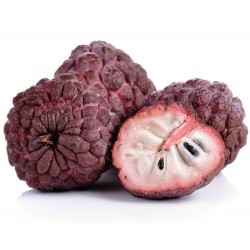
Red Custard Apple Seeds...
Price
€4.95
(SKU: V 10 R)
Seeds Gallery EU,
5/
5
<div>
<h2><strong>Red Custard Apple Seeds RARE (Annona reticulata)</strong></h2>
<h2><span style="color: #ff0000;"><strong>Price for Package of 2 seeds.</strong></span></h2>
<p>The red custard apple is a very close relative to the sugar apple and atemoya. They have a thick creamy custard-like pulp that can be pink, red. The fruit have a pleasant flavor and aroma, and they are best eaten out of hand or in ice cream.</p>
<p><span>Both in tree and in fruit, the custard apple, Annona reticulata L., is generally rated as the mediocre or "ugly duckling" species among the prominent members of this genus. Its descriptive English name has been widely misapplied to other species and to the hybrid ATEMOYA, and it is sometimes erroneously termed "sugar apple", "sweetsop" and, by Spanish-speaking people, "anon" or "rinon", in India, "ramphal", all properly applied only to Annona squamosa. It has, itself, acquired relatively few appropriate regional names. Most commonly employed as an alternate name in English-speaking areas is bullock's-heart or bull's-heart; in French, coeur de boeuf; Portuguese, coracao de boi; in Spanish, often merely corazon—all alluding to its form and external blush. The skin color is reflected in the Bolivian name, chirimoya roia, the Salvadoran anona rosada, and the Guatemalan anona roja or anona colorada. In the latter country it is also known as anona de seso. Araticum ape or araticum do mato are additional names in Brazil. Some people refer to it as Jamaica apple, or as netted custard apple, which is translated as anona de redecilla in Honduras and Nicaragua. Cachiman, cachiman coeur de boeuf and corossol sauvage may be heard in the French-influenced West Indies. In the Netherlands Antilles it is kasjoema. This name and boeah nona are used in Surinam. In Cuba, it is mamon or chirimoya. Some Central Americans give it the name anona, or anonillo; Colombians, anon pelon. To the Carib Indians the fruit was known as alacalyoua; to the Aztecs, quaultzapotl, and to the Maya, tsulimay, tsulilpox, tsulipox, pox, oop, or op. It is generally called in the Philippines sarikaya; in India ramphal, nona or luvuni, in Malaya, nona kapri, or lonang; in Thailand, noi nong";; in Cambodia, mo bat or mean bat; in Laos, khan tua lot; in South Vietnam, binh bat; North Vietnam, qua na. <br /><a name="Description"></a><strong><span><br /></span></strong></span><strong><span>Description</span></strong><span><br />The custard apple tree is not especially attractive. It is erect, with a rounded or spreading crown and trunk 10 to 14 in (25-35 cm) thick. Height ranges from 15 to 35 ft (4.5-10 m). The ill-smelling leaves are deciduous, alternate, oblong or narrow-lanceolate, 4 to 8 in (10-20 cm) long, 3/4 to 2 in (2 5 cm) wide, with conspicuous veins. Flowers, in drooping clusters, are fragrant, slender, with 3 outer fleshy, narrow petals 3/4 to 1 1/4 in (2 3 cm) long; light-green externally and pale-yellow with a dark-red or purple spot on the inside at the base. The flowers never fully open. The compound fruit, 3 l/4 to 6 1/2 in (8-16 cm) in diameter, may be symmetrically heart-shaped, lopsided, or irregular; or nearly round, or oblate, with a deep or shallow depression at the base. The skin, thin but tough, may be yellow or brownish when ripe, with a pink, reddish or brownish-red blush, and faintly, moderately, or distinctly reticulated. There is a thick, cream-white layer of custardlike, somewhat granular, flesh beneath the skin surrounding the concolorous moderately juicy segments, in many of which there is a single, hard, dark-brown or black, glossy seed, oblong, smooth, less than 1/2 in (1.25 cm) long. Actual seed counts have been 55, 60 and 76. A pointed, fibrous, central core, attached to the thick stem, extends more than halfway through the fruit. The flavor is sweet and agreeable though without the distinct character of the cherimoya, sugar apple, or atemoya. <br /><a name="Origin_and_Distribution"></a><strong><span><br /></span></strong></span><strong><span>Origin and Distribution</span></strong><span><br />The custard apple is believed to be a native of the West Indies but it was carried in early times through Central America to southern Mexico. It has long been cultivated and naturalized as far south as Peru and Brazil. It is commonly grown in the Bahamas and occasionally in Bermuda and southern Florida. Apparently it was introduced into tropical Africa early in the 17th century and it is grown in South Africa as a dooryard fruit tree. In India the tree is cultivated, especially around Calcutta, and runs wild in many areas. It has become fairly common on the east coast of Malaya, and more or less throughout southeast Asia and the Philippines though nowhere particularly esteemed. Eighty years ago it was reported as thoroughly naturalized in Guam. In Hawaii it is not well known. <br /><a name="Cultivars"></a><strong><span><br /></span></strong></span><strong><span>Cultivars </span></strong><span><br />No named cultivars are reported but there is considerable variation in the quality of fruit from different trees. The yellow-skinned types seem superior to the brownish, and, when well filled out, have thicker and juicier flesh. Seeds of a purple-skinned, purple-fleshed form, from Mexico, were planted in Florida and the tree has produced fruit of unremarkable quality. <br /><a name="Climate"></a><strong><span><br /></span></strong></span><strong><span>Climate</span></strong><span><br /> The custard apple tree needs a tropical climate but with cooler winters than those of the west coast of Malaya. It flourishes in the coastal lowlands of Ecuador; is rare above 5,000 ft (1,500 m). In Guatemala, it is nearly always found below 4,000 ft (1,220 m). In India, it does well from the plains up to an elevation of 4,000 ft (1,220 m); in Ceylon, it cannot be grown above 3,000 ft (915 m). Around Luzon in the Philippines, it is common below 2,600 ft (800 m). It is too tender for California and trees introduced into Palestine succumbed to the cold. In southem Florida the leaves are shed at the first onset of cold weather and the tree is dormant all winter. Fully grown, it has survived temperatures of 27º to 28ºF (-2.78º to 2.22ºC) without serious harm. This species is less drought-tolerant than the sugar apple and prefers a more humid atmosphere. <br /><a name="Soil"></a><strong><span><br /></span></strong></span><strong><span>Soil</span></strong><span><br />The custard apple does best in low-lying, deep, rich soil with ample moisture and good drainage. It grows to full size on oolitic limestone in southern Florida and runs wild in light sand and various other types of soil in the New and Old World tropics but is doubtless less productive in the less desirable sites. <br /><a name="Propagation"></a><strong><span><br /></span></strong></span><strong><span>Propagation</span></strong><span><br />Seed is the usual means of propagation. Nevertheless, the tree can be multiplied by inarching, or by budding or grafting onto its own seedlings or onto soursop, sugar apple or pond apple rootstocks. Experiments in Mexico, utilizing cherimoya, llama, soursop, custard apple, Annona sp. Af. lutescens and Rollinia jimenezii Schlecht. as rootstocks showed best results when custard apple scions were side-grafted onto self-rootstock, soursop, or A. sp. Af. lutescens. Custard apple seedlings are frequently used as rootstocks for the soursop, sugar apple and atemoya. <br /><br /><a name="Culture"></a><strong><span><br /></span></strong></span><strong><span>Culture</span></strong><span><br />The tree is fast-growing and responds well to mulching, organic fertilizers and to frequent irrigation if there is dry weather during the growing period. The form of the tree may be improved by judicious pruning. <br /><a name="Harvesting_And_Yield"></a><strong><span><br /></span></strong></span><strong><span>Harvesting And Yield</span></strong><span><br />The custard apple has the advantage of cropping in late winter and spring when the preferred members of the genus are not in season. It is picked when it has lost all green color and ripens without splitting so that it is readily sold in local markets. If picked green, it will not color well and will be of inferior quality. The tree is naturally a fairly heavy bearer. With adequate care, a mature tree will produce 75 to 100 lbs (34-45 kg) of fruits per year. The short twigs are shed after they have borne flowers and fruits. <br /><a name="Pests_and_Diseases"></a><strong><span><br /></span></strong></span><strong><span>Pests and Diseases</span></strong><span><br /> The custard apple is heavily attacked by the chalcid fly. Many if not all of the fruits on a tree may be mummified before maturity. In India, the ripening fruits must be covered with bags or nets to avoid damage from fruit bats. A dry charcoal rot was observed on the fruits in Assam in 1947. In 1957 and 1958 it made its appearance at Saharanpur. The causal fungus was identified as Diplodia annonae. The infection begins at the stem end of the fruit and gradually spreads until it covers the entire fruit. <br /><a name="Food_Uses"></a><strong><span><br /></span></strong></span><strong><span>Food Uses</span></strong><span><br />In India, the fruit is eaten only by the lower classes, out-of-hand. In Central America, Mexico and the West Indies, the fruit is appreciated by all. When fully ripe it is soft to the touch and the stem and attached core can be easily pulled out. The flesh may be scooped from the skin and eaten as is or served with light cream and a sprinkling of sugar. Often it is pressed through a sieve and added to milk shakes, custards or ice cream. I have made a delicious sauce for cake and puddings by blending the seeded flesh with mashed banana and a little cream.</span></p>
<p><a name="Food_Value"></a><strong><span><br /></span></strong><strong><span>Food Value Per 100 g of Edible portion*</span></strong></p>
<p><span>Calories 80-101 <br />Moisture 68.3-80.1 g <br />Protein 1.17-2.47 g <br />Fat 0.5-0.6 g <br />Carbohydrates 20-25.2 g <br />Crude Fiber 0.9-6.6 g <br />Ash 0.5-1.11 g <br />Calcium 17.6-27 mg <br />Phosphorus 14.7-32.1 mg <br />Iron 0.42-1.14 mg <br />Carotene 0.007-0.018 mg <br />Thiamine 0.075-0.119 mg <br />Riboflavin 0.086-0.175 mg <br />Niacin 0.528-1.190 m <br />Ascorbic Acid 15.0-44.4 mg <br />Nicotinic Acid 0.5 mg <br />*Minimum and maximum levels of constituents from analyses made in Central America, Philippines and elsewhere. <br /><a name="Toxicity"></a><strong><span><br /></span></strong></span><strong><span>Toxicity</span></strong><span><br />The seeds are so hard that they may be swallowed whole with no ill effects but the kernels are very toxic. The seeds, leaves and young fruits are insecticidal. The leaf juice kills lice. The bark contains 0.12% anonaine. Injection of an extract from the bark caused paralysis in a rear limb of an experimental toad. Sap from cut branches is acrid and irritant and can severely injure the eyes. The root bark has yielded 3 alkaloids: anonaine, liriodenine and reticuline (muricinine).</span></p>
<p><a name="Other_Uses"></a><strong><span><br /></span></strong><strong><span>Other Uses</span></strong><span><br />The leaves have been employed in tanning and they yield a blue or black dye. A fiber derived from the young twigs is superior to the bark fiber from Annona squamosa. Custard apple wood is yellow, rather soft, fibrous but durable, moderately close-grained, with a specific gravity of 0.650. It has been used to make yokes for oxen. <br /><a name="Medicinal_Uses"></a><strong><span><br /></span></strong></span><strong><span>Medicinal Uses</span></strong><span><br />The leaf decoction is given as a vermifuge. Crushed leaves or a paste of the flesh may be poulticed on boils, abscesses and ulcers. The unripe fruit is rich in tannin; is dried, pulverized and employed against diarrhea and dysentery. The bark is very astringent and the decoction is taken as a tonic and also as a remedy for diarrhea and dysentery. In severe cases, the leaves, bark and green fruits are all boiled together for 5 minutes in a liter of water to make an exceedingly potent decoction. Fragments of the root bark are packed around the gums to relieve toothache. The root decoction is taken as a febrifuge.</span></p>
<p></p>
</div>
<div>
<table border="1" cellspacing="0" cellpadding="0">
<tbody>
<tr>
<td colspan="2" valign="top" width="100%">
<p><span style="color: #008000;"><strong>Sowing Instructions</strong></span></p>
</td>
</tr>
<tr>
<td valign="top" nowrap="nowrap">
<p><span style="color: #008000;"><strong>Propagation:</strong></span></p>
</td>
<td valign="top">
<p><span style="color: #008000;">Seeds / Cuttings</span></p>
</td>
</tr>
<tr>
<td valign="top" nowrap="nowrap">
<p><span style="color: #008000;"><strong>Pretreat:</strong></span></p>
</td>
<td valign="top">
<p><span style="color: #008000;">pour hot water over the seeds + soak about 24-48 h</span></p>
</td>
</tr>
<tr>
<td valign="top" nowrap="nowrap">
<p><span style="color: #008000;"><strong>Stratification:</strong></span></p>
</td>
<td valign="top">
<p><span style="color: #008000;">0</span></p>
</td>
</tr>
<tr>
<td valign="top" nowrap="nowrap">
<p><span style="color: #008000;"><strong>Sowing Time:</strong></span></p>
</td>
<td valign="top">
<p><span style="color: #008000;">all year round</span></p>
</td>
</tr>
<tr>
<td valign="top" nowrap="nowrap">
<p><span style="color: #008000;"><strong>Sowing Depth:</strong></span></p>
</td>
<td valign="top">
<p><span style="color: #008000;">1 cm</span></p>
</td>
</tr>
<tr>
<td valign="top" nowrap="nowrap">
<p><span style="color: #008000;"><strong>Sowing Mix:</strong></span></p>
</td>
<td valign="top">
<p><span style="color: #008000;">Coir or sowing mix + sand or perlite</span></p>
</td>
</tr>
<tr>
<td valign="top" nowrap="nowrap">
<p><span style="color: #008000;"><strong>Germination temperature:</strong></span></p>
</td>
<td valign="top">
<p><span style="color: #008000;">25 ° C +</span></p>
</td>
</tr>
<tr>
<td valign="top" nowrap="nowrap">
<p><span style="color: #008000;"><strong>Location:</strong></span></p>
</td>
<td valign="top">
<p><span style="color: #008000;">bright + keep constantly moist not wet</span></p>
</td>
</tr>
<tr>
<td valign="top" nowrap="nowrap">
<p><span style="color: #008000;"><strong>Germination Time:</strong></span></p>
</td>
<td valign="top">
<p><span style="color: #008000;">about 2-6 weeks</span></p>
</td>
</tr>
<tr>
<td valign="top" nowrap="nowrap">
<p><span style="color: #008000;"><strong>Watering:</strong></span></p>
</td>
<td valign="top">
<p><span style="color: #008000;">Water regularly during the growing season</span></p>
</td>
</tr>
<tr>
<td valign="top" nowrap="nowrap">
<p><span style="color: #008000;"><strong> </strong></span></p>
</td>
<td valign="top">
<p><br /><span style="color: #008000;">Seeds Gallery 05.11.2012.</span></p>
</td>
</tr>
</tbody>
</table>
</div>
V 10 R (2 S)

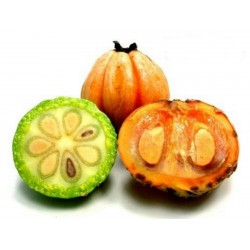
Seeds Cowa Mangosteen,...
Price
€5.95
(SKU: V 221 C)
Seeds Gallery EU,
5/
5
<h2><strong>Seeds Cowa Mangosteen, Kandis, Village Kandis (Garcinia cowa)</strong></h2>
<h2><span style="color:#ff0000;"><strong>Price for Package of 2 seeds.</strong></span></h2>
<p>Garcinia cowa is an evergreen tree growing 8 - 12 metres tall. The bole can be 15 - 20cm in diameter.</p>
<p>The tree is harvested from the wild for its edible fruits and leaves, which are used locally. The tree is also cultivated for its fruit, mainly in some areas of its native range, and is also sometimes used as a rootstock.</p>
<p>Fruit - raw The mature, ovoid-globose, yellow-brown fruit can be 5 - 6cm long and 4 - 5cm in diameter</p>
<p>Leaves - cooked Eaten as a vegetable.</p>
V 221 C

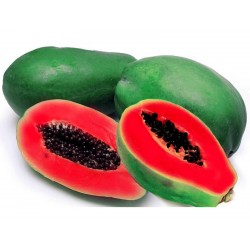
Red Papaya Seeds Rare...
Price
€2.25
(SKU: V 22 R)
Seeds Gallery EU,
5/
5
<h2><strong>Red Papaya Seeds Rare (Carica papaya)</strong></h2>
<h2><span style="color:#ff0000;"><strong>Price for Package of 10 or 100 seeds.</strong></span></h2>
<div>Papaya (Carica papaya L.) - Deliciously sweet with musky undertones and a soft, butter-like consistency, it is no wonder the papaya was reputably called the "fruit of the angels" by Christopher Columbus. Once considered quite exotic, they can now be found in markets throughout the year. Although there is a slight seasonal peak in early summer and fall, papaya trees produce fruit year round. </div>
<div>Papayas are fruits that remind us of the tropics, the regions of the world in which they are grown. Once considered an exotic fruit, papayas' rise in popularity has made them much more available. Papaya fruits are good sources of Vitamin A, B and C. </div>
<div>Papayas are spherical or pear-shaped fruits that can be as long as 20 inches. The ones commonly found in the market usually average about 7 inches and weigh about one pound. Their flesh is a rich orange color with either yellow or pink hues. </div>
<div>Papaya has a wonderfully soft, butter-like consistency and a deliciously sweet, musky taste. Inside the inner cavity of the fruit are black, round seeds encased in a gelatinous-like substance. Papaya's seeds are edible, although their peppery flavor is somewhat bitter. </div>
<div>The fruit, as well as the other parts of the papaya tree, contain papain, an enzyme that helps digest proteins. This enzyme is especially concentrated in the fruit when it is unripe. Papain is extracted to make digestive enzyme dietary supplements and is also used as an ingredient in some chewing gums. </div>
<div>How To Grow Papaya From Seed</div>
<div>Select a sunny and sheltered place in your garden. That's right, in your garden. Don't start them in pots!</div>
<div>Papayas don't transplant well. Anything that disturbs the roots of papayas really sets them back. They just hate it. The most fool proof way to grow papayas is to simply plant them where they are to live.</div>
<div>Papaya trees are very, very hungry. That means they need very good soil, rich in organic matter and nutrients.</div>
<div>If you don't have fabulous soil, make some. Dig a hole half a meter across and fill it with a mix of good compost and soil. Actually, make at least two or three such planting beds in different locations.</div>
<div>Now sprinkle on some of your seeds. A couple of dozen per bed is a good amount. Cover the seeds lightly with more compost, and then mulch the patch well. The seeds usually take about a couple of weeks to germinate, and may take longer.</div>
<div>Soon you will notice that your seedlings are very different in size and vigor. That's why we planted so many. Start culling the weaker ones. Pull them out while still small, or cut bigger ones down to the ground. Only keep the very best.</div>
<div>At this stage you should keep about half a dozen plants. Papaya plants can be male, female, or bisexual, and you want to make sure that you have some females or bisexual plants amongst your seedlings. The male papayas don't bear fruit.</div>
<div>Papayas start flowering when they are about one metre tall. The males flower first. Male flowers have long, thin stalks with several small blooms. Female flowers are usually single blooms, bigger, and very close to the trunk. </div>
<div>Cull most of the male plants. You only need one male for every ten to fifteen female plants to ensure good pollination.</div>
<div>And that's it. You should end up with one very strong and healthy female plant per bed. (And a male plant somewhere...) If the weather is warm enough, and if you are growing your papayas in full sun and in good soil, then you could be picking the first ripe fruit within 10 months.</div>
<div>How much water?</div>
<div>Papayas have large soft leaves. They evaporate a lot of water in warm weather, so they need a lot of water. But unfortunately papayas are very susceptible to root rot, especially in cool weather. Overwatering is the most common reason for problems when growing papayas.</div>
<div>It depends on the temperature and on the overall health and vigor of the plant. A healthier plant will cope better, but in general you should be careful not to overwater during periods of cool weather.</div>
<div>Growing Papaya In Cooler Climates</div>
<div>If you get at least long hot summers you could grow papaya just as an ornamental plant. In this case you would start them in a pot indoors to gain extra time. Plant them out against a sun facing wall and enjoy the tropical look. However, you won't be able to keep your papaya alive long enough to get fruit.</div>
<div>The only other option is growing papaya in a huge pot, and to keep the pot in a heated greenhouse in winter. You may also grow papaya as an annual decorative plant.</div>
<div>
<table border="1" cellspacing="0" cellpadding="0"><tbody><tr><td colspan="2" valign="top" width="100%">
<p><span style="color:#008000;"><strong>Sowing Instructions</strong></span></p>
</td>
</tr><tr><td valign="top" nowrap="nowrap">
<p><span style="color:#008000;"><strong>Propagation:</strong></span></p>
</td>
<td valign="top">
<p><span style="color:#008000;">Seeds / Cuttings</span></p>
</td>
</tr><tr><td valign="top" nowrap="nowrap">
<p><span style="color:#008000;"><strong>Pretreat:</strong></span></p>
</td>
<td valign="top">
<p><span style="color:#008000;">0</span></p>
</td>
</tr><tr><td valign="top" nowrap="nowrap">
<p><span style="color:#008000;"><strong>Stratification:</strong></span></p>
</td>
<td valign="top">
<p><span style="color:#008000;">0</span></p>
</td>
</tr><tr><td valign="top" nowrap="nowrap">
<p><span style="color:#008000;"><strong>Sowing Time:</strong></span></p>
</td>
<td valign="top">
<p><span style="color:#008000;">all year round</span></p>
</td>
</tr><tr><td valign="top" nowrap="nowrap">
<p><span style="color:#008000;"><strong>Sowing Depth:</strong></span></p>
</td>
<td valign="top">
<p><span style="color:#008000;">0.5 cm</span></p>
</td>
</tr><tr><td valign="top" nowrap="nowrap">
<p><span style="color:#008000;"><strong>Sowing Mix:</strong></span></p>
</td>
<td valign="top">
<p><span style="color:#008000;">Coir or sowing mix + sand or perlite</span></p>
</td>
</tr><tr><td valign="top" nowrap="nowrap">
<p><span style="color:#008000;"><strong>Germination temperature:</strong></span></p>
</td>
<td valign="top">
<p><span style="color:#008000;">about 25-28 ° C</span></p>
</td>
</tr><tr><td valign="top" nowrap="nowrap">
<p><span style="color:#008000;"><strong>Location:</strong></span></p>
</td>
<td valign="top">
<p><span style="color:#008000;">bright + keep constantly moist not wet</span></p>
</td>
</tr><tr><td valign="top" nowrap="nowrap">
<p><span style="color:#008000;"><strong>Germination Time:</strong></span></p>
</td>
<td valign="top">
<p><span style="color:#008000;">2-4 Weeks</span></p>
</td>
</tr><tr><td valign="top" nowrap="nowrap">
<p><span style="color:#008000;"><strong>Watering:</strong></span></p>
</td>
<td valign="top">
<p><span style="color:#008000;">regular watering during the growth period + dry between waterings</span></p>
</td>
</tr><tr><td valign="top" nowrap="nowrap">
<p><span style="color:#008000;"><strong> </strong></span></p>
</td>
<td valign="top">
<p><br /><span style="color:#008000;"><em>Copyright © 2012 Seeds Gallery - Saatgut Galerie - Galerija semena. All Rights Reserved.</em></span></p>
</td>
</tr></tbody></table></div>
V 22 R


Giant plant (with giant fruits)

Coming Soon
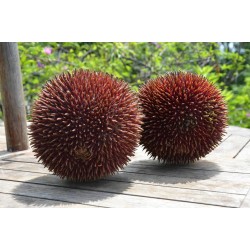
Red Durian Seeds, Durian...
Price
€12.50
(SKU: V 399)
Seeds Gallery EU,
5/
5
<h2><span style="font-size:14pt;"><strong>Durian seeds - "King of fruits" (Durio zibethinus)</strong></span></h2>
<h2><span style="color:#ff0000;font-size:14pt;"><strong>Price for Package of 1 seeds.</strong></span></h2>
<h2><strong>Please note, Durian seeds are available only for a short time so we can send you a fresh seeds. Most of the time waiting time to get fresh Durian seeds is about 7 to 11 month.</strong></h2>
<p>Everything about Durio dulcis is just a little bit magical. The tree is one of the more rare durians, residing deep in the jungles of Borneo.<span> </span>When in season, the red orbs dot the leafy forest floor like fallen Christmas ornaments, that sensational red leaping out of the green foliage like a natural stop light. It’s the strongest smelling durian, and its odor is said to waft as much as a kilometer through the jungle.</p>
<p>Durio dulcis has a bright red exterior with long, extremely sharp thorns that are sometimes yellow or black on the tips. It is extremely difficult to open because it lacks the weakened seams running stem to tip that every other durian opens along. Getting into a Durio dulcis requires a machete. Generally, the fruit is simply whacked in half and the gooey flesh is scraped out with the fingers.</p>
<p>In the case of Durio dulcis, the old adage, “Smells like hell but tastes like heaven” is exaggerated. The smell of Durio dulcis is absolutely overpowering. Although Durio graveolens literally means the “smelly durian,” the odor of Durio dulcis has by far the strongest aroma, an intoxicating vapor of industrial glue, menthol, and sugar.</p>
<p>Various botanists seemed to have had a love-hate relationship with the fruit. Writes durian explorer Wertit Soegeng-Reksodihardjo, “A</p>
<p>fruiting tree may be smelled for miles around, and a ripe fruit kept in a room is unbearably nauseating, even for the durian lover. Yet the pulp is most tasty and sweet.”</p>
<p>Regardless of opinions of smell, everyone agrees that in flavor Durio dulcis is unparalleled. The flesh is soft, almost soupy yellow draped loosely on large, nearly black seeds. It is the sweetest of the durians, like powdered sugar whipped into yogurt with a minty aftertaste. Anyone who likes mint chocolate will love this durian.</p>
<p><strong>Distribution</strong></p>
<p>It grows wild throughout Borneo, but is not generally cultivated. Rob and I found it twice; at the Agricultural Park in Tenom, Sabah, and near a longhouse in the Upper Kapuas region of West Kalimantan.</p>
<p><strong>Local Names</strong></p>
<p>Durio dulcis is known by a variety of names.</p>
<p>Here are some that we found: Durian Lai, Durian Tahi (Poop durian, may be a joke),<span> </span>Lahong, and Durian Merah (Red Durian. This can be also refer to the red-fleshed durio graveolens). Durian Api, Fire Durian.</p>
<p>Others have mentioned: durian bala (Kenya), Pesasang (tidung), durian isang (fish gill) and Durian Hutan (jungle durian).</p>
<p><strong>Scientific Name</strong></p>
<p>Durio dulcis literally means the “sweet durian”<span> </span>in Latin. It was named by the great botanist Odoardo Beccari during his three year exploration of Borneo between 1865-1868. He first found this durian during a stay on Mattang Mountain, near Kuching Sarawak. It was that odor that drew him to the right spot. He says, “attracted by the sweet and delicious scent exhaled by some fallen fruits, I discovered one of the most exquisite wild durians of Borneo, Durio dulcis.”</p>
<h2><strong>Growing Durian Dulcis</strong></h2>
<p>Despite its excellent flavor and the unabashed enjoyment by durian lovers, Durio dulcis is only occasionally cultivated. It is not considered of economical interest and hasn’t been the subject of much research. The tree is large, at least 40 meters tall, and the flowers are a lovely shade of pink. Like most other durians, it is naturally found in mixed lowland dipterocarp forests in both swampy areas and ridges up to 800 meters altitude. It is a robust tree and it has been suggested to use it as rootstock in commercial durian farming.</p>
<p><strong>Temperature:</strong></p>
<p>Durian is surprisingly tolerant of relatively low mean temperatures. There are places on the island of Java between 400-600 m [1300-2000 feet] altitude where durian is successfully grown that have a mean yearly normal temperature of just 23º C. (73º F.) Some research has indicated that growth is limited below a mean monthly temperature of 22º C. [71º F.]. The trees may survive occasional dips in temperature as low as 10º C. [50º F.], but may drop their leaves. On the other end of the spectrum, durian trees in India sometimes successfully tolerate high temperatures up to 46º C. [114º F.].</p>
<p><strong>Water:</strong></p>
<p>Durian trees need abundant rainfall, or equivalent irrigation. In most areas of Asia where durians are grown, mean annual rainfall is greater than 2000 mm [75 inches]. Historically, though, the better production sites have developed in areas with annual mean rainfall totals of 3000 mm [125 inches] or more, well distributed throughout the year. There is no doubt, though, that drier zones can produce good crops with appropriate irrigation. In India, durian trees are often planted along the banks of streams, where the roots can reach water. They do not do well very close to the ocean, having almost no tolerance for salinity in the soil.</p>
<p><strong>Soil:</strong></p>
<p>Durian trees grow best in a rich, deep, well-drained sandy clay or clay loam (deep alluvial or loamy soil), high in organic matter, pH range of 6 - 7. Heavy clay soils are not supportive of good durian tree growth and health, as they do not drain well. Seedlings make more vigorous growth when potted into media that is light and sandy rather than high in clay content.</p>
<h2><strong>WIKIPEDIA:</strong></h2>
<p>Durio dulcis, known as durian marangang (or merangang), red durian, tutong, or lahong, is a fairly large tree in the genus Durio. It can grow up to 40 m tall. The husk of its fruit is dark red to brown-red, and covered with slender 15–20 mm long spines. The fruit flesh is dark yellow, thin, and deep caramel-flavored, with a turpentine odor. The fruit of this species is considered by many to be the sweetest of all durians.</p>
V 399

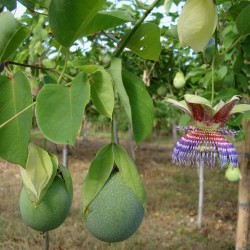
Sweet Calabash Seeds
Price
€2.30
(SKU: V 18 PMC2)
Seeds Gallery EU,
5/
5
<h2><strong>Sweet Calabash Seeds (Passiflora maliformis)</strong></h2>
<h2><span style="color:#ff0000;"><strong>Price for Package of 3 seeds.</strong></span></h2>
<p>Passiflora morifolia (Blue sweet calabash or Woodland-Passion flower) is a white and purple flowered Passion flower with blue or purple fruit. The very fast-growing vine that can grow a few dozen feet in a season. Flowers are ornate, white, blue and purple fruits follow, which ripen to blue or purple. The orange pulp might be edible. The hardiness of P. morifolia is to at least 32 °F, some sources claim as low as 15-20 °F. It grows well in full sun or filtered sun. The vine is fast growing and once established it is quite vigorous. Its propagation is by seed or by cuttings. It is grown as an ornamental. It is not cultivated for its fruit. It is native to the parts of Central and South America</p>
<table cellspacing="0" cellpadding="0" border="1"><tbody><tr><td colspan="2" width="100%" valign="top">
<p><span style="color:#008000;"><strong>Sowing Instructions</strong></span></p>
</td>
</tr><tr><td valign="top" nowrap="nowrap">
<p><span style="color:#008000;"><strong>Propagation:</strong></span></p>
</td>
<td valign="top">
<p><span style="color:#008000;">Seeds / Cuttings</span></p>
</td>
</tr><tr><td valign="top" nowrap="nowrap">
<p><span style="color:#008000;"><strong>Pretreat:</strong></span></p>
</td>
<td valign="top">
<p><span style="color:#008000;">about 24-48 hours soak in warm water</span></p>
</td>
</tr><tr><td valign="top" nowrap="nowrap">
<p><span style="color:#008000;"><strong>Stratification:</strong></span></p>
</td>
<td valign="top">
<p><span style="color:#008000;">0</span></p>
</td>
</tr><tr><td valign="top" nowrap="nowrap">
<p><span style="color:#008000;"><strong>Sowing Time:</strong></span></p>
</td>
<td valign="top">
<p><span style="color:#008000;">all year round</span></p>
</td>
</tr><tr><td valign="top" nowrap="nowrap">
<p><span style="color:#008000;"><strong>Sowing Depth:</strong></span></p>
</td>
<td valign="top">
<p><span style="color:#008000;">0.5 cm</span></p>
</td>
</tr><tr><td valign="top" nowrap="nowrap">
<p><span style="color:#008000;"><strong>Sowing Mix:</strong></span></p>
</td>
<td valign="top">
<p><span style="color:#008000;">Coir or sowing mix + sand or perlite</span></p>
</td>
</tr><tr><td valign="top" nowrap="nowrap">
<p><span style="color:#008000;"><strong>Germination temperature:</strong></span></p>
</td>
<td valign="top">
<p><span style="color:#008000;">25 ° C +</span></p>
</td>
</tr><tr><td valign="top" nowrap="nowrap">
<p><span style="color:#008000;"><strong>Location:</strong></span></p>
</td>
<td valign="top">
<p><span style="color:#008000;">bright + keep constantly moist not wet</span></p>
</td>
</tr><tr><td valign="top" nowrap="nowrap">
<p><span style="color:#008000;"><strong>Germination Time:</strong></span></p>
</td>
<td valign="top">
<p><span style="color:#008000;">2-4 Weeks</span></p>
</td>
</tr><tr><td valign="top" nowrap="nowrap">
<p><span style="color:#008000;"><strong>Watering:</strong></span></p>
</td>
<td valign="top">
<p><span style="color:#008000;">Water regularly during the growing season</span></p>
</td>
</tr><tr><td valign="top" nowrap="nowrap">
<p><span style="color:#008000;"><strong> </strong></span></p>
</td>
<td valign="top">
<p><br /><span style="color:#008000;"><em>Copyright © 2012 Seeds Gallery - Saatgut Galerie - Galerija semena. All Rights Reserved.</em></span></p>
</td>
</tr></tbody></table>
V 18 PMC2


Plant resistant to cold and frost
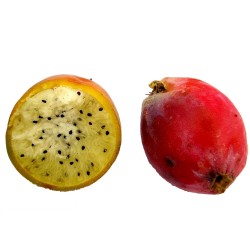
Caracore Cactus Seeds...
Price
€1.85
(SKU: CT 18)
Seeds Gallery EU,
5/
5
<h2><strong>Caracore Cactus Seeds (Cereus dayamii)</strong></h2>
<h2><span style="color: #ff0808;"><strong>Price for Package of 5 seeds.</strong></span></h2>
<p class="MsoNormal" style="margin-bottom: .0001pt; line-height: normal;">Cereus stenogonus is a species in the genus Cereus (sweet potato cactus) which contains 20 species and belongs to the family of the Cactaceae (Cactus Family).</p>
<p class="MsoNormal" style="margin-bottom: .0001pt; line-height: normal;">The trees grow to a height of approximately 8 meters.</p>
<p class="MsoNormal" style="margin-bottom: .0001pt; line-height: normal;">Cereus stenogonus is an evergreen plant. The flowers are funnel-shaped and pink. The flowers are arranged solitarily.</p>
<p class="MsoNormal" style="margin-bottom: .0001pt; line-height: normal;">The fruits are edible berries.</p>
<p class="MsoNormal" style="margin-bottom: .0001pt; line-height: normal;"><b>Uses</b></p>
<p class="MsoNormal" style="margin-bottom: .0001pt; line-height: normal;">Fruits and stems of Cereus repandus are edible. Its wood has been used in making furniture and for firewood, and sliced stems have been used as a soap substitute. It is cultivated as a living fence also.</p>
<p class="MsoNormal" style="margin-bottom: .0001pt; line-height: normal;">Cereus stenogonus is native to eastern Bolivia, Paraguay, and north Argentina.</p>
<p class="MsoNormal" style="margin-bottom: .0001pt; line-height: normal;">Cereus stenogonus prefers a sunny site and can withstand temperatures down to -6,6º C. It grows best in soils that are dry.</p>
CT 18 (5 S)

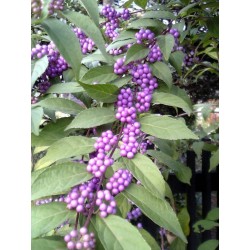
Japanese beautyberry Seeds...
Price
€1.85
(SKU: V 240)
Seeds Gallery EU,
5/
5
<h2><span style="font-size:14pt;"><strong>Japanese beautyberry Seeds (Callicarpa japonica)</strong></span></h2>
<h2><span style="font-size:14pt;color:#ff0000;"><strong>Price for Package of 5 seeds.</strong></span></h2>
<p>Callicarpa japonica, commonly known as East Asian beautyberry or Japanese beautyberry, is a plant in the mint family.</p>
<p>It is a deciduous shrub, which is most notable for producing purple drupes (its “berries") in the fall. The flowers can range from pink to white. This species is native to China, Japan, Korea, Ryukyu Islands, and Taiwan. It considered to be a common species in Japan.</p>
<p>It is cultivated as an ornamental tree, and it is very popular in gardens and parks. The fruits are not edible for humans, but provide food for birds and deer. The leaves can be used to make herbal tea.</p>
V 240

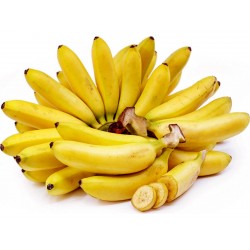
Wild Banana Seeds (Musa...
Price
€3.25
(SKU: V 88 MB)
Seeds Gallery EU,
5/
5
<!DOCTYPE html>
<html>
<head>
<meta http-equiv="Content-Type" content="text/html; charset=UTF-8" />
</head>
<body>
<h2><strong>Wild Banana Seeds (Musa balbisiana)</strong></h2>
<h2><span style="color: #ff0000;"><strong>Price for Package of 3 seeds.</strong></span></h2>
<p>Musa balbisiana is a wild-type species of banana native to eastern South Asia, northern Southeast Asia, and southern China. It is one of the ancestors of modern cultivated bananas, along with Musa acuminata. It was first scientifically described in 1820 by the Italian botanist Luigi Aloysius Colla.</p>
<p>It grows lush leaves in clumps with a more upright habit than most cultivated bananas. Flowers grow in inflorescences colored red to maroon. The fruit is between blue and green. They are considered inedible because of the seeds they contain but are very tasty.</p>
<p>It may be assumed that wild bananas were cooked and eaten or agriculturalists would not have developed the cultivated banana.[4] Seeded Musa balbisiana fruit are called butuhan ('with seeds') in the Philippines, and kluai tani (กล้วยตานี) in Thailand. Natural parthenocarpic clones occur through polyploidy and produce edible bananas, examples of which are wild saba bananas.</p>
</body>
</html>
V 88 MB





